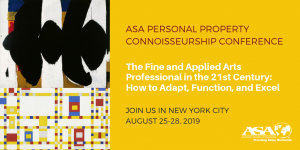CAA News Today
Meet the 2020 CAA-Getty International Program Participants
posted by CAA — Nov 14, 2019
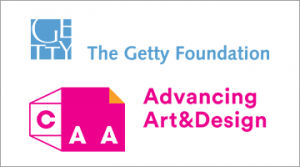
We’re pleased to announce this year’s participants in the CAA-Getty International Program. Now in its ninth year, this international program supported by the Getty Foundation will bring fifteen new participants and five alumni to the 2020 Annual Conference in Chicago, Illinois.
The participants—professors of art history, curators, and artists who teach art history—hail from countries throughout the world, expanding CAA’s growing international membership and contributing to an increasingly diverse community of scholars and ideas. This year we are adding participants from four countries not included previously—Bolivia, Saudi Arabia, Côte d’Ivoire, and Singapore—bringing the total number of countries represented by the program to fifty. Selected by a jury of CAA members from a highly competitive group of applicants, the participants will receive funding for travel expenses, hotel accommodations, conference registration, CAA membership, and per diems for out-of-pocket expenditures.
At a one-day preconference colloquium, to be held this year at the School of the Art Institute of Chicago, the fifteen new participants will discuss key issues in the international study of art history together with five CAA-Getty alumni and several CAA members from the United States, who also will serve as hosts throughout the conference. The preconference program will delve deeper into subjects discussed during last year’s program, including such topics as postcolonial and Eurocentric legacies, interdisciplinary and transnational methodologies, and the intersection of politics and art history.
This is the third year that the program includes five alumni, who provide an intellectual link between previous convenings of the international program and this year’s events. They also serve as liaisons between CAA and the growing community of CAA-Getty alumni. In addition to serving as moderators for the preconference colloquium, the five alumni will present a new Global Conversation during the 2020 conference titled Things Aren’t Always as they Seem: Art History and the Politics of Vision.
The goal of the CAA-Getty International Program is to increase international participation in the organization’s activities, thereby expanding international networks and the exchange of ideas both during and after the conference. CAA currently includes members from sixty countries around the world. We look forward to welcoming the following participants at the next Annual Conference in Chicago.
2020 Participants in the CAA-Getty International Program
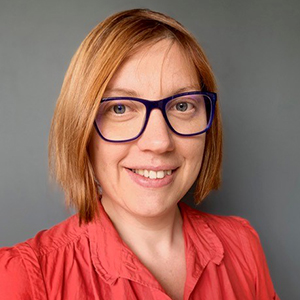
Irene Bronner is a senior lecturer with the South African Research Chair in South African Art History and Visual Culture, Faculty of Art, Design and Architecture, University of Johannesburg, South Africa. Her doctorate (DLitt et Phil), titled “Representations of Domestic Workers in Post-apartheid South African Art Practice,” was conferred by the University of Johannesburg in 2016. She then held a three-year postdoctoral research fellowship with the same institution, during which time she received a Postdoctoral Research Fellows’ Excellence Award. Her research interests center on feminist studies in the visual arts, with a focus on contemporary southern Africa. She works principally with feminist, queer and postcolonial cultural theory as well as issues of memory, affect, gender, and the aftermath of trauma. She has published in local and international journals, recently in Woman’s Art Journal and Textile: Journal of Cloth and Culture.
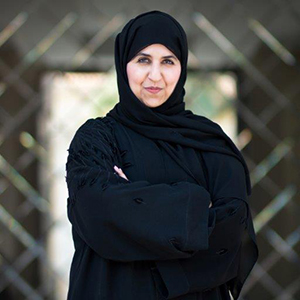
Eiman Elgibreen is an artist and an assistant professor of art history at the Princess Nourah bint Abdulrahman University in Riyadh, Saudi Arabia. She obtained a PhD in art history from the University of Sussex (UK) for her research on “Image Making: Representations of Women in the Art and Career of Safeya Binzagr 1968-2000.” Since 2011 Elgibreen has also been a freelance writer for Al-Riyadh Daily Newspaper and Al-Jazirah Daily Newspaper, and an art consultant for organizations that are concerned with preserving the legacy of Saudi pioneer artists such as Darat Safeya Binzagr (a museum devoted to the artist’s work), and Saudi Arts House (a family foundation devoted to the work of Mohammed Alsaleem). In addition, she has curated a number of art exhibitions, including the Saudi National Pavilion at the 58th Venice Biennale, 2019. Elgibreen is interested in exploring the forgotten and/or misrepresented aspects of Saudi and Arab culture through her research and her art. A goal of her work is to encourage acceptance of cultural differences.
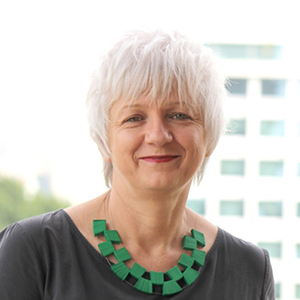
Dária G. Jaremtchuk is an associate professor of art history at the Universidade de São Paulo, Brazil, where she teaches undergraduate and graduate courses on contemporary art. As Fulbright Brazil Distinguished Chair at Emory University in 2019, she taught a course in the art history department about Brazilian contemporary visual arts. In 2018, she was a visiting scholar at Georgetown University and at Brown University in 2011. In 2010, she edited the book Arte e política: situações (Art and politics: situations) (Alameda Editora) and in 2007 she published Anna Bella Geiger: Passagens Conceituais (Anna Bella Geiger: conceptual passages) (C/Arte and Editora da Universidade de São Paulo). She is currently researching the relocation of Brazilian artists during the Brazilian military dictatorship of the 1960s and 70s and the artistic exchange between Brazil and the United States at that time. She has published on this topic in journals, conference proceedings, and book chapters.
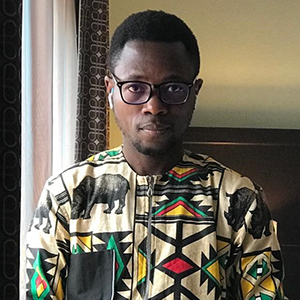
Ganiyu Jimoh received a PhD in art history from the University of Lagos, Nigeria, where he is also a lecturer. He is currently a postdoctoral fellow with the Arts of Africa and Global Souths research program in the Department of Fine Art at Rhodes University in South Africa. His research, which focuses on contemporary art, new media, satire, and cartoons has attracted major awards, including the prestigious University of Lagos Best Researcher Award in Arts and Humanities in 2011. In 2015 he received a grant to conduct research for his PhD dissertation at the African Studies Center at Michigan State University. Jimoh is also a recipient of the 2019 African Studies Association Presidential fellowship. As a scholarly writer who is also a practicing political cartoonist, Jimga (his cartoon signature) has several local and international exhibitions to his credit and currently serves as the secretary of Cartoonists Association of Nigeria (CARTAN).
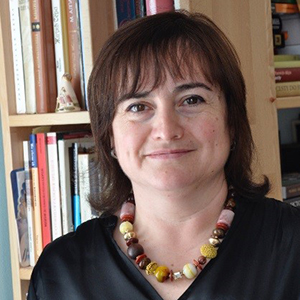
Mariana Levytska is a research associate in the Department of Art Studies of the Ethnology Institute at the National Academy of Sciences of Ukraine in Lviv. She received a PhD in the history of art from the Lviv National Academy of Arts in 2003. Based on her thesis, she published a monograph about Ukrainian portrait painting as an artistic and memorial phenomenon of the long nineteenth century. In addition, she has worked as a senior lecturer from 2005–14 and associate professor in 2015 at the Department of Architectural Environment Design in the Faculty of Architecture of the Lviv National Agricultural University. Levytska’s current area of research is Ukrainian religious art of the eighteenth century (late Baroque-Rococo period), focusing on the concept of cultural transfer according to “peripatetic works of art (such as engravings and albums)” as well as peripatetic artists. She is also interested in issues of Ukrainian historiography of the art of the twentieth century.
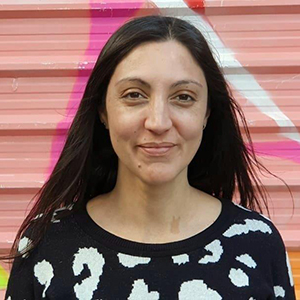
Daniela Lucena holds a PhD in social sciences from the University of Buenos Aires (UBA) and specialize in the sociology of art and culture. A researcher at the National Scientific and Technical Research Council (CONICET) in Buenos Aires, she teaches sociology of art courses at UBA, where she is also head of a research team. Since 2003 she has studied various aesthetical projects where art, culture, and politics are intertwined. Her books include Contaminación artística. Arte concreto, comunismo y peronismo en los años 40 (Artistic contamination: concret avant-garde, communism and Peronism in the 40s) (Biblios, 2015) and Modo mata moda. Arte, cuerpo y (micro)política en los 80 (Form kills fashion: art, body and [micro]politics in the 80s), coauthored with Gisela Laboureau, (EDULP, 2016). In addition to her work as researcher, since 2007 she has collaborated with PH15, a foundation that organizes photography workshops for children of vulnerable populations, assessing programs and community work linked to art.
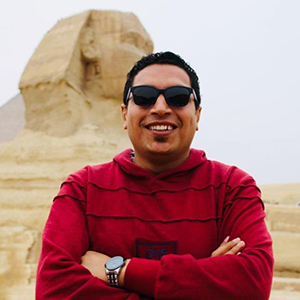
Ali Mahfouz is the director of the Mansoura Storage Museum, part of the Ministry of Egyptian Antiquities. He received a BA in 2010 and an MA in Egyptology in 2017, both from Mansoura University. He is currently working on his PhD. Mahfouz began working as an inspector of antiquities at the Ministry of Antiquities in 2012. In August 2015 he was appointed the supervisor of the Mansoura Storage Museum and in October 2018 he became its director. With colleagues, Mahfouz founded Save Mansoura, a volunteer organization dedicated to raising public awareness about the value of cultural heritage and the restoration of historic sites. He is also the cofounder of the Documentation of Architectural and Urban Heritage of Mansoura City Project, which aims to document, digitize, and archive that city’s cultural history. His greatest concern is the fate of archaeological sites damaged or destroyed because of political conflicts and the need to preserve his country’s cultural heritage in the wake of that destruction.
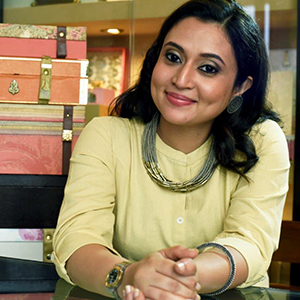
Priya Maholay-Jaradi is the founding convenor of a new art history academic program, a collaboration between the National University of Singapore (NUS) and the National Gallery Singapore. She earned an MA in art history from the School of Oriental and African Studies, London (2001); a PhD from NUS (2012), and a postdoctoral fellowship at the International Institute for Asian Studies, Leiden (2013). A former curator at the Asian Civilizations Museum, Singapore, she has curated Portrait of a Community (National Gallery of Modern Art, Mumbai, 2002), Beauty in Asia (Asian Civilizations Museum, Singapore, 2007) and Tautology of Memory (NUS Museum, Singapore, 2012). Jaradi’s monograph, Fashioning a National Art: Baroda’s Royal Collection and Institutions (1875-1924) (Oxford University Press, 2016), mobilizes provincial archives to reveal links between princely modernities and nationalisms in South Asia. She is the volume editor of Baroda: A Cosmopolitan Provenance in Transition (Marg Foundation, 2015). Her current research examines India-Singapore museological imaginations within the context of cold war diplomacy, the Non-Aligned Movement, and decolonization.
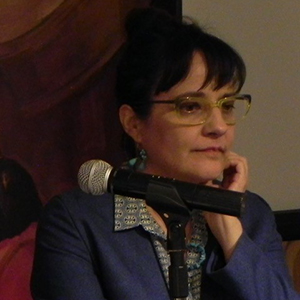
Valeria Paz Moscoso specializes in modern and contemporary Bolivian art history. She is the academic coordinator and advisor in the Department of Culture at the Universidad Católica Boliviana (La Paz), where she is also a temporary lecturer and editor of the journal Ciencia y Cultura (Science and culture). Her PhD dissertation examined the concept of repression and emancipation in the work of Bolivian artist Roberto Valcárcel. Currently, she is researching the disruption of the narrative of Indigenism in contemporary art. Additional research interests include gender, humor, critical theory, postcolonial studies, and arts-based research. She has curated exhibitions in Bolivia and the United Kingdom, and published in journals such as ESCALA Research Papers, Ciencia y Cultura, Bisagra (Hinge), Terremoto (Earthquake), and in the books Corrosión y Anomalía: escenas del arte contemporáneo boliviano (Corrosion and anomaly: scenes from contemporary Bolivian art) (2019) and Bolivia: Los caminos de la escultura (Bolivia: the paths of sculpture) (2009), a publication selected for the Bicentennial Library of Bolivia.
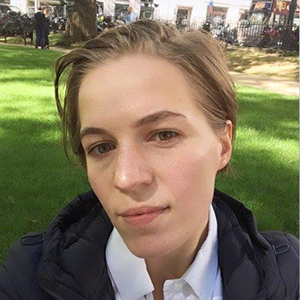
Daria Panaiotti is a photography curator and research associate in the Contemporary Art Department of the State Hermitage Museum, St. Petersburg, Russia. She graduated with honors from the European University in St. Petersburg (EUSPB), where she is currently completing her PhD with a dissertation on the history of Soviet documentary photography in Brezhnev’s era. She is also a member of the program committee of the After Post-Photography international conference, the only annual conference on photographic theory and history in Russia. Previously she was involved in the project In Support of Photography in Russia, funded by the IRIS Foundation, Moscow, where she was a member of the curatorial team that organized exhibitions of Russian photography for FotoFest 2012—an international photography festival held every two years in Houston, Texas—and where she also participated in an international portfolio review for Russian photographers at the Garage Center for Contemporary Culture in Moscow in 2011.
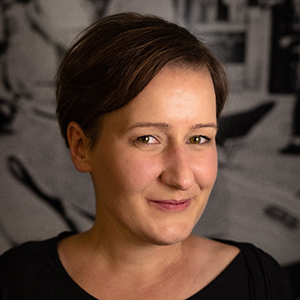
Aleksandra Paradowska is a lecturer and researcher in the Department of Art History and Philosophy, Faculty of Art Education and Curatorial Studies, at the University of Fine Arts in Poznań, Poland. After receiving a PhD from the Adam Mickiewicz University in Poznań in 2013, she was a postdoctoral fellow at the University of Wrocław from 2014–17. Her research focuses on architectural history of the nineteenth and twentieth centuries, especially the relationship between architecture and politics. For the past five years she has studied Nazi architecture in Polish territories during the Second World War in relation to different perspectives of the humanities, that is, interdisciplinary views of postcolonial and heritage studies. Paradowska has published widely on Polish interwar architecture and received several scholarships: from DAAD (Deutscher Akademischer Austauschdienst) in 2010, START by the Foundation for Polish Science in 2014, and a scholarship for leading young researchers in Poland by the Ministry of Science and Higher Education in 2017–19.
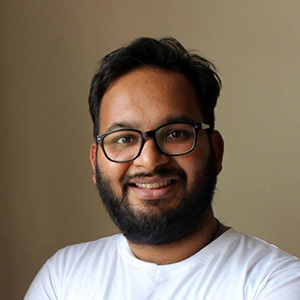
Saurabh Tewari received a BArch in 2008 from the Sushant School of Art and Architecture, Gurgaon/GGSIP University, Delhi (India), and a MDes in 2010 from the Industrial Design Center, Indian Institute of Technology Bombay. As a doctoral candidate in the Design Program at the Indian Institute of Technology Kanpur, he is attempting to map out and understand the shifting role of design in postcolonial India within the broader narrative of national development. Currently an assistant professor of design in the School of Planning and Architecture in Bhopal, Tewari has developed a curriculum that includes design history, design culture, and design studies. Ultimately, his goal is to develop South Asia’s first postgraduate program in design history and studies. He views his role in two ways: as a design historian in South Asia exploring and constructing scholarly approaches to design history, and as a South Asian scholar in the design history community voicing the potential of decolonized approaches to the field.
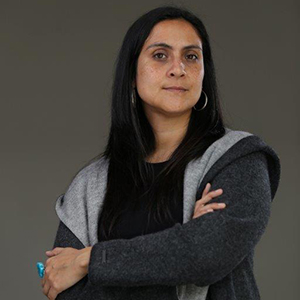
Giuliana Vidarte received a BA in Latin American literature and an MA in art history from the Pontificia Universidad Católica del Perú. In 2013 she was part of a curatorial intensive course in Northern Ireland organized by Independent Curators International (New York). In 2014 she received a travel grant to participate in the annual meeting of the International Committee for Museums and Collections of Modern Art (CIMAM) in Qatar. Between 2015–18, she was the curator of Bufeo: Amazonía+Arte, a project for the research and dissemination of Amazonian art. Vidarte has developed exhibition projects about the relationship between visual arts and literature, the rewriting of history based on the recovery of unofficial discourses, and artistic production in the Peruvian Amazon. Currently, she is chief curator and head of exhibitions at the Museo de Arte Contemporáneo in Lima (MAC Lima) and curatorial assistant for the Peruvian pavilion at the 58th Venice Biennale in 2019.
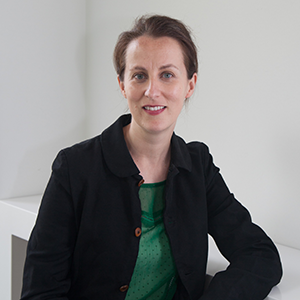
Julia Waite is the curator of New Zealand art at the Auckland Art Gallery Toi o Tāmaki, New Zealand’s largest art museum. She has worked on a number of large-scale exhibitions including the fifth Auckland triennial, If you were to live here . . . (2013) and Space to Dream: Recent Art from South America (2016). Her research interests are focused on the development of modern art in New Zealand and its connections with other peripheral modernisms. In 2015 she curated the exhibition Freedom and Structure: Cubism and New Zealand Art 1930–1960, which toured throughout New Zealand, and published an associated catalogue. She cocurated the major survey of New Zealand’s preeminent abstract painter Gordon Walters: New Vision, which opened at Auckland Art Gallery in 2018. Most recently, Waite has cocurated Louise Henderson: From Life, the first comprehensive retrospective of French-born New Zealand artist Louise Henderson. She has an MA in art history (First Class) and an MA in museum and heritage studies.
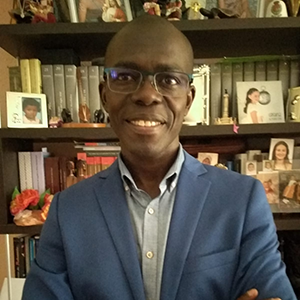
Jean-Arsène Yao received a PhD in Latin American history from the Universidad de Alcalá (Spain) in 2002. His scholarship focuses on teaching Spanish in the African Diaspora, particularly with blacks in Argentina. Currently professor of Latin America and Caribbean studies at the Université Félix Houphouët-Boigny (Côte d’Ivoire) and visiting professor at the Universidad de Alcalá and the Universidad de Granada (Spain), his teaching interests include Hispanic American culture and civilization; race, class, and ethnicity in Latin America; and Afro-Hispanic history. He has a special interest in the visual representation of people of African descent in art history and visual studies. Yao has conducted research in Argentina, Colombia, Cuba, Ecuador, and Uruguay. He has published widely, including five books, several book chapters, and over twenty articles in juried journals of research. Since 2016 he has been the founder-coordinator of the Group of Latin American Studies and Research (https://grelat-ufhb.org/).
Participating Alumni
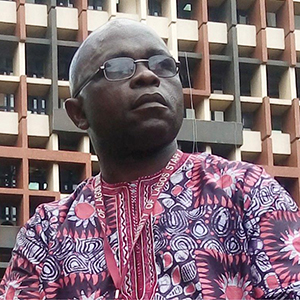
Abiodun Akande is a senior lecturer at the University of Lagos, Nigeria, where he teaches painting, art education, and art history. Akande earned a BA in fine arts from the Obafemi Awolowo University and received an MA and PhD in the visual arts of Africa from the Institute of African Studies, University of Ibadan, Nigeria. In 2013, he participated in the first Basel Summer School in African Studies at the University of Basel in Switzerland; he also attended a graduate symposium hosted by the School of Arts at Peking University in Beijing, China. Akande first participated in the CAA-Getty International Program in 2016 and returned the following year to participate in the 2017 CAA-Getty reunion program. His current research focuses on knowledge systems in the art and cultural practices of indigenous communities in Nigeria. A recent publication, “Ará òrun kìn-ìn kin-in: Òyó-Yòrùbá egúngún Masquerade in Communion and Maintenance of Ontological Balance,” (Genealogy, 3(1), 7, 2019) explores the Yòrùbá belief in life after death, and how the powers and spirits of the deceased are harnessed for the benefit of the living.
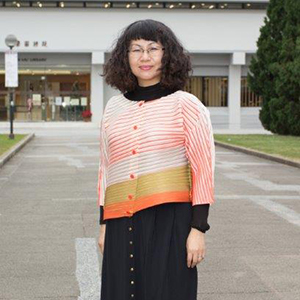
Pedith Chan is an assistant professor of Cultural Management in the Faculty of Arts at the Chinese University of Hong Kong. She received her PhD in Art and Archaeology from SOAS, University of London. Before joining the Chinese University of Hong Kong Chan was an assistant curator at the Hong Kong Museum of Art, and an assistant professor at the City University of Hong Kong. Her research interests focus on the production and consumption of art and cultural heritage in modern and contemporary China. Recent publications include The Making of a Modern Art World: Institutionalization and Legitimization of Guohua in Republican Shanghai (Leiden: Brill, 2017), “Representation of Chinese Civilization: Exhibiting Chinese Art in Republican China,” in The Future of Museum and Gallery Design (London: Routledge, 2018), and “In Search of the Southeast: Tourism, Nationalism, Scenic Landscape in Republican China,” (Twentieth-Century China, 2018). She is currently researching the making of scenic sites in modern China. Chan was a participant in the 2019 CAA-Getty International Program.
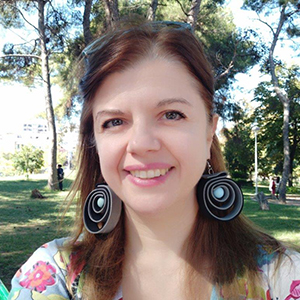
Iro Katsaridou has been the curator of modern and contemporary art at the Museum of Byzantine Culture in Thessaloniki, Greece since 2005. She studied art history at the Aristotle University of Thessaloniki and the Université Paris I-Sorbonne, and also pursued museum studies at the City University of New York. Her doctoral dissertation focused on contemporary Greek photography (Aristotle University, 2010). For the past six years Katsaridou has been researching photography and art in World War I and II, during which time she has curated exhibitions on the subject and edited related catalogues. For the last four years she has been teaching as an adjunct faculty member at several Greek universities. She has co-edited two books about photography during the Nazi Occupation of Greece (1941-1944) and written articles and book chapters on photography, exhibition display policies, as well as the relationship between contemporary Greek art and politics. In 2019, she participated in the CAA-Getty International Program.
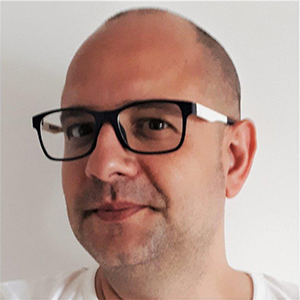
Cristian Nae is an associate professor at the George Enescu National University of Arts in Iași, Romania, where he teaches courses on contemporary art history, critical theory, visual and exhibition studies. He has benefited from scholarships and research grants from the Erste Foundation (Vienna), National Research Council, Romania (CNCS-UEFISCDI) , the CAA-Getty International Program, the Getty Foundation (Los Angeles), and New Europe College (Bucharest). His latest studies have appeared in collective volumes published by Wiley-Blackwell (2019, forthcoming) and Routledge (2018). Nae is the co-editor of Rethinking the Image of the World: Projects and Sketches. Contemporary Romanian Art 2010-2020 (Hatje Cantz, 2019, forthcoming). As a curator, he is the co-organizer of the exhibition Rethinking the Image of the World: Projects and Sketches (Musée Mill, La Louvrière, Belgium, 2019), which was part of the Europalia Arts Festival. Nae also curated Unfinished Conversations on the Weight of Absence, the exhibition marking Romania’s participation in the 58th Venice Biennale (2019). Nae participated in the first year of the CAA-Getty International Program, in 2012.
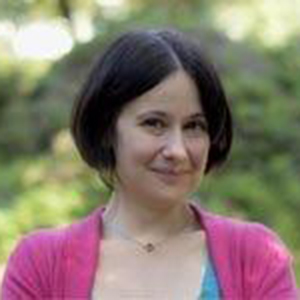
Nóra Veszprémi is a research associate for the European Research Council-funded project Continuity/Rupture: Art and Architecture in Central Europe 1918–1939 (CRAACE) at Masaryk University, Brno (Czech Republic). She is also an honorary research fellow at the University of Birmingham (UK), where she recently completed a project on museums in Austria-Hungary between 1867 and 1918. In 2014–15 she taught at the Institute of Art History at Eötvös Loránd University, Budapest (Hungary), where she also received her PhD in 2013. Veszprémi specializes in nineteenth- and early-twentieth-century Central European art. A former curator at the Hungarian National Gallery, she is the author of a monograph on romanticism and popular taste in mid-nineteenth century Hungary (in Hungarian) and co-author (with Matthew Rampley and Markian Prokopovych) of two forthcoming volumes on museums in Austria-Hungary: An Empire on Display: The Art Galleries and Museums of Austria-Hungary (Penn State University Press, 2020); and Liberalism, Nationalism and Design Reform in the Habsburg Empire: Museums of Design, Industry and the Applied Arts (Routledge, 2020). She is currently working on a monograph about historical memory in Central Europe after the collapse of the Habsburg Empire. Veszprémi was a 2015 participant in the CAA-Getty International Program.
International Review: A Centenary Celebration of Chilean Artist Nemesio Antúnez
posted by CAA — Nov 14, 2019
The following article was written in response to a call for submissions by CAA’s International Committee. It is by Sophie Halart, Professor of Art History at the Universidad Adolfo Ibañez, Santiago, Chile.

Figure 1. Promotional image of the Antúnez centenary celebration (photograph provided by the Ministerio de las culturas, las artes y el patrimonio)
In 2018-19, Chile celebrated the centenary of the visual artist, educator, and cultural figure Nemesio Antúnez (1918-93) (Fig. 1). The initiative, led by the family foundation in charge of Antúnez’s legacy, comprised several events, including roundtable discussions and archival and retrospective exhibitions throughout the country. In Santiago, the Museo de Bellas Artes (Fine Arts Museum) and the Museo de Arte Contemporáneo (Museum of Contemporary Art), two institutions whose very structure and mission were profoundly modified under Antúnez’s leadership, organized a series of three exhibitions, each focusing on one aspect of his prolific career.

Figure 2. Manifiesto, installation view (photograph provided by the author)
The Museo de Bellas Artes hosted Manifiesto (Manifesto), a comprehensive retrospective of Antúnez’s artistic production (Fig. 2). Showcasing a selection of paintings, engravings, notebooks, and photographic archives, curator Ramón Castillo retraced both Antúnez’s international formation and his influence on the Chilean art scene. Initially trained as an architect in Chile, Antúnez secured a Fulbright grant in 1943 to study art in New York, where he attended Stanley William Hayter’s Atelier 17. Upon his return to Santiago in 1956, he founded his own engraving workshop, Taller 99, attended by important national artists like Roser Bru and Juan Downey. Antúnez’s interest in art education also led him to take part in the creation of the Universidad Católica’s School of Arts in 1959. Castillo’s exhibition offers an intimate gaze into Antúnez’s life and work, revealing the complexity of both. More importantly, the show considers the artist’s standing at the threshold of two epochs. A product of cosmopolitan modernity, Antúnez felt more acutely than most the changes that entry into the contemporary age would bring to Latin American art.

Figure 3. Construction of a lower ground floor at the Museo de Bellas Artes, Santiago (photograph provided by the author)
This temporal aspect of Antúnez is even more clearly evidenced in the second exhibition hosted by the museum. El Museo en Tiempos de Revolución (The museum in times of revolution), curated by Amalia Cross, examined the pivotal changes made by Antúnez when he became the Fine Arts Museum’s director in 1969. The appointment, which just preceded the presidential election of Socialist candidate Salvador Allende, reflected the implementation of an equally revolutionary agenda that sought to do away with the museum’s elitist image. Appealing to the etymological roots of the word museum, Antúnez opened the institution’s doors to a plurality of artistic media, including music and live performance, while striving to attract new, more diverse audiences. He also oversaw an important refurbishment of the building that included the construction of an additional, underground exhibition space dedicated to recent art (Fig. 3).

Figure 4. Liliana Porter, Wrinkle Environment, 1969. 2019 re-creation of the piece in the Museo de Bellas Artes, Santiago (photograph provided by the author)
While Antúnez shared some of the democratizing ideals of culture advocated by Allende’s government, his project to open the museum to new audiences and artistic practices—including an incipient conceptual scene—rejected strictly programmatic and propagandistic ends. Some memorable on-site interventions were performed under his tenure, including Juan Pablo Langlois’s Cuerpos Blandos (Soft bodies, 1969) and Cecilia Vicuña’s Otoño (Autumn, 1971), both pioneering the field of institutional critique in Chile. Through a display of archival documents and photographs, Cross’s curatorial work invites comparison of the infrastructural and conceptual modifications that took place in the museum. The exhibition also recreates an installation produced by Liliana Porter whom Antúnez had invited to exhibit in June 1969 along with Luis Camnitzer. A founding member of the New York Graphic Workshop (along with Camnitzer), Porter produced one of her “Wrinkled Environments,” a paper tapestry that covered the walls of the museum and which visitors were invited to modify by tearing away some of the sheets and discarding them on the floor (Fig. 4).
The 1973 military coup, which took place on the eve of an exhibition on Mexican muralism due to open a few days later, put an abrupt end to this period of political and artistic experiments and sent Antúnez into European self-exile. The return of a democratic government in 1990 allowed him to resume his work as director of the museum, a position he occupied until his death three years later.

Figure 5. Nemesio Antúnez: Panamericano, installation view (photograph provided by the author)
While these first two exhibitions focused on Antúnez during his time as director of the Bellas Artes, the show Nemesio Antúnez: Panamericano, which took place in the adjoining building of the Museo de Arte Contemporáneo (MAC), focused on a previous and lesser-known period of Antúnez’s professional life, namely his tenure as director of that museum (1962–64) and his influential role in rethinking contemporary artistic creation along transdisciplinary and cross-regional lines. (Fig. 5). According to the show’s curator Matías Allende, Antúnez remains a ghostly figure in the MAC, his vision haunting an institution which, when it opened in 1946, was the first museum of contemporary art in Latin America. Allende’s research focuses on the way Antúnez contributed to rethinking contemporary creation along three axes: the national, the popular, and the American. Indeed, while the off-site events he staged in modest neighborhoods of Santiago revealed an early ambition to democratize art, the organization of the first Biennial of American Printmaking (1963) showed Antúnez’s desire to build a bridge between avant-garde art and popular crafts on a continental scale. Moreover, using the connections he had made while studying in the US, his acquaintance with Alfred Barr in particular, Antúnez also piloted the organization of exhibitions comprised of works on loan from MoMA’s permanent collection. In this exhibition, Allende opted for a densely documented installation that could be overwhelming at times. Thankfully, this encyclopedic fervor was offset by the presence of short videos the curator commissioned from the video artist Flavia Contreras. Somewhat dramatizing Antúnez’s aura as an educator, these videos were fictional recreations of the cultural TV program Ojo con el arte (Watch out with the art) that Antúnez hosted for two seasons on national TV (in 1970–71 and for a second run between 1990 and 1993).
While the three exhibitions discussed above were products of independent research and curatorial planning, each of which focused on one facet of Antúnez, they may also be understood as part of a collective portrait enriching the prolific and multifarious contributions he made to Chilean art and cultural life. At the same time, the pivotal role played by the private Fundación Nemesio Antúnez in the planning of the centenary, an organization founded and directed by relatives of the artist, also begs the question of the public sector’s passivity in providing official recognition to one of Chile’s most important cultural figures. While the Fine Arts Museum, a state entity, and the MAC, a university institution that also relies on public support, did eventually take an active part in the celebration, the delays that occurred in the opening of the exhibitions were due in part to an initial lack of enthusiasm on the part of the State. Thus, while the exhibitions comprising the backbone of the centenary celebrations must be praised for their quality, they also highlight the problematic absence of public funding for culture in Chile and the ways in which the writing of art historical narratives continue to be relegated to the goodwill of private institutions and family estates.
An Interview with Kellie Jones, 2020 CAA Distinguished Scholar
posted by CAA — Oct 28, 2019
We are delighted to welcome Dr. Kellie Jones, professor in Art History and Archaeology and the Institute for Research in African American Studies (IRAAS) at Columbia University, as the Distinguished Scholar for the 108th CAA Annual Conference in Chicago, February 12-15, 2020.
Dr. Jones, whose research interests include African American and African Diaspora artists, Latinx and Latin American Artists, and issues in contemporary art and museum theory, is the recipient of awards from the Hutchins Center for African and African American Research, Harvard University, Creative Capital, and Warhol Foundation, among others. In 2016, she was named a MacArthur Foundation Fellow. In 2018, Dr. Jones was the inaugural recipient of the Excellence in Diversity Award from CAA.
CAA media and content manager Joelle Te Paske spoke with Dr. Jones earlier this fall to learn about what she’s working on and looking forward to in upcoming exhibitions and scholarship. Read the interview below.
This interview has been edited for length and clarity.
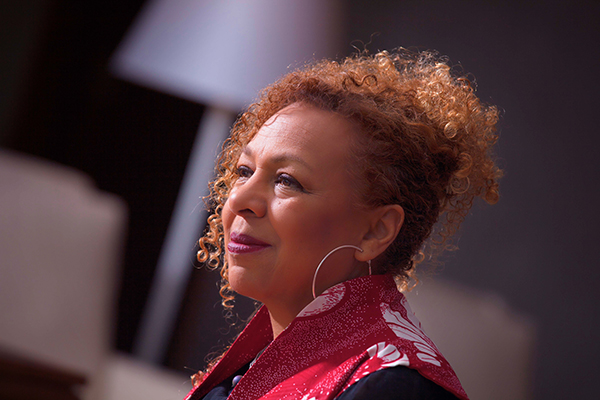
Dr. Kellie Jones. Photo: Rod McGaha
Hi, Professor Jones. Thank you for taking the time for this interview. It’s an honor to speak with you and we’re excited that you’ll be with us in Chicago.
I’m looking forward to it.
Great. So to begin—to locate ourselves in time and place—how are you? How was your summer?
It’s always fun, and it always ends too quickly. I think that’s just normal. [Laughs]
Yes, I guess that’s where we should be at this point [laughs]. Were you working on a particular project this summer?
Yes. I was working on a project for Center for Advanced Study in the Visual Arts (CASVA). Huey Copeland of Northwestern University and Steven Nelson of UCLA are spearheading a Black Modernisms seminar with a group of scholars. I just finished an essay on the Harlem Renaissance that is still to be titled. I haven’t written extensively on that period so I’m really looking forward to hearing back from them. It involves race and gender and I’m very excited about it.
What else is exciting in your work right now?
Candida Alvarez: Here, A Visual Reader (Green Lantern Press 2019), the first major monograph on the Chicago-based painter, is about to hit shops. I’m excited by this project to which I contributed the essay, “When Painting Stepped Out to Lunch.” I have book that I’m finishing on global conceptual art networks that is tentatively titled Art is an Excuse, on how conceptual art allowed for different types of global connections. One great example is Senga Nengudi and her relationship to Japan which is something I’ve written about earlier but I wanted to more forthrightly connect to Japanese conceptualism. So how does Senga Nengudi fit into that dialogue, or what is her dialogue? I’m thinking about conceptual art as a motor for global art connection, different from what people call globalization—more like artist dialogues, not neoliberal globalization.
A macro view.
The book is more about relationships. We always think about artists in their particular nationalist space. What did Japanese conceptualism look like? What did Latin American conceptualism look like? How were they different? But we really don’t talk about the kind of dialogue that people have with each other. That’s really the whole premise of the project.
That’s terrific. I read that for undergrad at Amherst College you made an interdisciplinary major. I was going to ask: Has an interdisciplinary outlook been formative in your career? But I feel you’re already embodying that.
You’re absolutely right. I created an interdisciplinary major at Amherst. Shout out to my alma mater and to liberal arts education.
We love that at CAA, yes.
And we love it because it allows people to see the breadth of the world in some fashion and then choose something or choose a few things. I’m one of the people that thought about Latin American and African American and Latinx artists at least from my college years, and I’ve been going with that for the longest, along with ideas of the African diaspora. You might start out with “Let’s compare”—the comparative structure; the binary is such a signature of art history. But then you realize that it’s so much more than a just a binary—the interdisciplinarity, the multidisciplinarity. That’s always been a part of what I’ve looked at because at that time—and I know I’ve said it on numerous occasions in numerous platforms—art history was really taught one way. Because I had grown up in New York I said, “But wait a minute, they’re leaving out all of these people that are making art that I know!” That I see every week. I mean, how is that possible? So I started there and just kept going.
I also read that you wanted to be a diplomat originally, and that makes sense to me. I think art historians are often part-diplomats, part-detectives, part-scientists. There’s so much that goes into the field.
Absolutely. I wanted to get away from art. I grew up with artists and poets and I said, “Oh my god, these people are broke. I can’t do that.”
Well, that’s realistic—I suppose it’s changed, too.
It’s absolutely changed, but if you’re thinking about late 1970s—wow. People weren’t even thinking about objects too much.
Someone reminded me much later—maybe a couple of years ago—they said, “Well you know, you’ve been doing [diplomacy] with art. You’ve been a cultural ambassador with this work, because you’ve done shows around the world.” Art history became, “Wow, you can do the same things.” You can study languages. You can travel. It did become a way you could do all those things, and then of course as you just mentioned, as a curator you are a diplomatic entity between artists and the institution.
As a liaison, definitely. It’s sensitive.
Right. Even as an academic, if you’re traveling around or if you’re representing a contemporary artist in your writing—how do you balance how the artist sees themselves with what you have to say? There’s always that.
I’m curious what you see as emerging trends in scholarship, especially in art history.
I think students and academics—particularly a new generation—don’t want traditional art history as we have known it. They want a more interdisciplinary, multidisciplinary, global understanding of art in the world. Art history is not just Europe, and it’s not just the United States. And the art of the United States meaning not just New York!
I think the other really exciting arena is, of course, gender. Gender studies. Queer studies in art history. Trans studies. All those things really change how we understand the object, how we understand history, the histories that we look for. There’s a similarity to the discoveries that I made when I was a student in college about how art history at that time did not represent even the histories of African Americans who were in New York, for instance. United States art history is written from a New York-centric perspective. And at that time, you didn’t see too many women in it. You didn’t see too many African Americans or Latinx figures. So now that such subjects are more widely known the next step seems to be to ask,”What is a queer art history?” And some people have been doing this for a while: Jonathan Weinberg, James Smalls, Julia Bryan-Wilson has brought us into the present with some of these ideas, and C. Ondine Chavoya with his Axis Mundo, project. So all these ideas are becoming more visible and I think it’s really exciting.
That’s one of the reasons why I’ve been so keen on my Harlem Renaissance article. It started out in one way, and then it took me in another direction; it takes another look at objects that have been dismissed as not being relevant, and sees them through a different lens. It opens up other paths into these works that have been discarded. Or maybe not discarded, but put to the side. Let’s ask, “What’s going on with gender in these works?” What’s going on with queerness, and how do they signify to a Harlem Renaissance that is quite queer? It’s something people in literature have discovered, certainly in the African American context, and they’ve been talking about that for years. Art history has to catch up.
Yes, you feel a real energy in the field, a real hunger for it. With recent protests around Warren Kanders at the Whitney Museum, what are your views on that momentum? [Editor’s note: Since this conversation took place, Warren Kanders announced his resignation from the Whitney Museum board.]
Well, you know, there have always been protests at US museums as well as those around the world. So whether you are a curator or a director who bares the brunt of the protest, or you are an artist who withdraws, you’re part of history. Scholars down the road are going to say, “These people pulled out. These people wrote a letter. These were the curators. These were the board members.” So for me it’s just part of history, and it has ebbs and flows. There are a lot of things going on in this world that artists are addressing, that artists see. They do respond to the world in one way or another. You may not see it visibly, but it’s there.
I agree. I think putting new ideas in the world the way artists do is cultural change, and like you said—it’s interconnected. You can’t really have one without the other.
Yes. It’s part of a larger history.
When did you first join CAA? Do you have a favorite memory from a conference?
I had joined CAA by 1990, when I served as the co-chair of the programming at the Annual Meeting for the Studio or Artists’ sessions with Robert Storr. I’ve been on plenty of panels since then, but to be honored in this way is humbling and exciting. Even better, all of the respondents I asked to participate on the Distinguished Scholar panel said, “Yes! I’ll be a part of it.” So I’m thrilled about that. I’ve been at Columbia University about 13 years, and I remember when Rosalind Krauss was honored, and I participated in Richard J. Powell’s Distinguished Scholar panel. So to step into those shoes, it seems a bit surreal.
Thinking of Chicago in 2020—do you have a favorite art-related excursion there?
Well, the South Side Community Art Center is legendary. It’s one of the original community art centers from the New Deal era, and it’s still in existence. I would definitely say go to that. That’s my favorite.
I’m marking it down for myself. Are there exhibitions coming up this fall that you recommend?
Senga Nengudi at Lenbachhaus in Munich; Robert Colescott at the Contemporary Art Center in Cincinnati curated by Lowery Sims and Matthew Weseley; Lynette Yiadom-Boakye at Yale Center for British Art curated by Hilton Als; Hank Willis Thomas: All Things Being Equal…, his first major survey at the Portland Art Museum. Curator Meg Onli at ICA Philadelphia has done a trio of shows under the title Colored People Time. The final component Banal Presents will be on view through December 22, 2019.
Shows that are further out that I’m excited about are Prospect 5 in New Orleans (Fall 2020), curated by Naima Keith and Diana Nawi. The citywide triennial in New Orleans is just a great experience. Everyone should check it out. Thomas Lax’s exhibition on Just Above Midtown gallery, that generative space of 1970s and 1980s, and its founder Linda Goode Bryant, will be wonderful to see at MoMA in 2022.
There are so many great young curators out here. Rujeko Hockley, Erin Christovale, numerous others. Tiona Nekkia McClodden is an artist who’s been doing some great archival curatorial work. She had a show that was in response to the anniversary of Mapplethorpe’s The Perfect Moment that just closed. There are just so many great people out here doing some wonderful things, and a lot of wonderful younger artists. I’m excited by it. We started out by talking about multidisciplinarity, interdisciplinarity—young curators are invested in that idea as much as scholars.
Oh and one thing that I’m really looking forward to down the line is, of course, the reopening of the Studio Museum in Harlem. I cannot wait for that!
Yes! It’s a ways off but that’s an exciting one. Well, thank you Dr. Jones. I appreciate you taking the time, and it’s been a pleasure to speak with you.
Thanks for your questions, and again it’s really an honor to be a part of this whole thing. I still kind of can’t believe it. I guess I will in February when I step off that plane!
The Distinguished Scholar Session honoring Kellie Jones will take place Thursday, February 13, 2020, from 4-5:30 PM at the Hilton Chicago, Grand Ballroom.
Biography of Dr. Kellie Jones
Dr. Kellie Jones is a Professor in Art History and Archaeology and African American and African Diaspora Studies at Columbia University. Her research interests include African American and African Diaspora artists, Latinx and Latin American Artists, and issues in contemporary art and museum theory.
Dr. Jones, a member of the American Academy of Arts and Sciences, has also received awards for her work from the Hutchins Center for African and African American Research, Harvard University and Creative Capital | Warhol Foundation. In 2016 she was named a MacArthur Foundation Fellow.
Dr. Jones’s writings have appeared in a multitude of exhibition catalogues and journals. She is the author of two books published by Duke University Press, EyeMinded: Living and Writing Contemporary Art (2011), and South of Pico: African American Artists in Los Angeles in the 1960s and 1970s (2017), which received the Walter & Lillian Lowenfels Criticism Award from the American Book Award in 2018 and was named a Best Art Book of 2017 in The New York Times and a Best Book of 2017 in Artforum.
Dr. Jones has also worked as a curator for over three decades and has numerous major national and international exhibitions to her credit. Her exhibition “Now Dig This! Art and Black Los Angeles, 1960-1980,” at the Hammer Museum, Los Angeles, was named one of the best exhibitions of 2011 and 2012 by Artforum, and best thematic show nationally by the International Association of Art Critics (AICA). She was co-curator of “Witness: Art and Civil Rights in the 1960s” (Brooklyn Museum), named one the best exhibitions of 2014 by Artforum.
Affiliated Society News for September 2019
posted by CAA — Sep 11, 2019
Affiliated Society News shares the new and exciting things CAA’s affiliated organizations are working on including activities, awards, publications, conferences, and exhibitions.
Interested in becoming an Affiliated Society? Learn more here.
SECAC
The 75th Annual SECAC Conference, hosted by the University of Tennessee at Chattanooga, will be held October 16 through 19, 2019. More than 540 papers—on studio art, art history, art education, and graphic design—will be presented in 142 sessions. All sessions will take place at the Chattanoogan Hotel. Offsite events include the annual SECAC Artist’s Fellowship and Juried Exhibitions and a keynote address by artist, educator, and advocate for artists, Sharon M. Louden, who serves as editor of the Living and Sustaining a Creative Life series of books and Artistic Director of the Visual Arts at Chautauqua Institution. More information and conference registration are available at https://secacart.org/page/Chattanooga.
Society for the Study of Early Modern Women and Gender (SSEMWG)
Foundation for Advancement in Conservation
Material Immaterial: Photographs in the 21st Century Symposium and Seminars
September 23-25, 2019, Yale University, New Haven, CT
Organized by Paul Messier and Monica Bravo
We are witnessing the historic transformation of photography from tangible objects—prints, plates, and negatives—to code: intangible bits, bytes, and pixels. As the tether between visual culture and the material world is recalibrated every day, a new form of literacy is required to draw meaning from physical media and its obsolescence. At the very moment when characterization and interpretation of the printed photograph is rapidly gaining ground, the momentum toward dematerialization raises the issue of the long-term relevance and sustainability of photography as a material fact. Does the physical photograph still matter today—as a source for teaching, learning, and scholarship—and will it matter into the future?
This symposium and elective seminars will provide insight into new tools for researching photographs with an emphasis on both the material and immaterial aspects of the medium. Conservation professionals will gain practical knowledge on new and existing techniques for characterizing prints and collections and how this information can be structured and visualized. Curators and art historians will benefit from exposure to the methods and techniques that underlie the contemporary approaches to material history. Together, the presentations and discussions are meant to demystify techniques adapted from seemingly exotic fields of artificial intelligence and data science and to cover some basic techniques for understanding and interpreting the physical and chemical makeup of a photographic print.
View the program for detailed a schedule and speaker list or visit the event website to register.
Support for this program comes from The Andrew W. Mellon Foundation Fund for Collaborative Workshops in Photograph Conservation, a grant from the National Endowment for the Humanities, and the Foundation for Advancement in Conservation Endowment for Professional Development.
Association for Modern and Contemporary Art of the Arab World, Iran, and Turkey (AMCA)
“AMCA Interview with the Winner of the 2019 Rhonda A. Saad Prize for Best Paper in Modern and Contemporary Arab Art”
The 2019 Rhonda A. Saad Prize for Best Paper in Modern and Contemporary Arab Art was awarded to Lara Ayad for her paper “Homegrown Heroes: Peasant Masculinity and Nation-Building in the Paintings of Aly Kamel al-Deeb.” Dr. Ayad is an Assistant Professor of Art History at Skidmore College. She received her PhD in the History of Art and Architecture at Boston University. An interview with Dr. Ayad about her research may be found on AMCA’s website: http://amcainternational.org/interview-with-lara-ayad/
The Rhonda A. Saad Prize review committee acknowledges that Dr. Ayad’s paper is highly original. The Committee found that her paper was a scrupulously researched examination of the 1930s visual cultural context in which the artist worked in Egypt, when ethnography, social sciences, and fine arts intersected on the body of the muscular, model peasant.
Established in 2010 in honor of our dear and respected colleague and friend, The Rhonda A. Saad Prize aims to recognize and promote excellence in the field of modern and contemporary Arab art. The award is offered to a graduate student or recent post-doctoral scholar working in any discipline whose paper is judged to provide the most significant contribution to the disciplines of Art History and Middle East Studies. For more information and submission guidelines, please visit www.amcainternational.org.
Visual Resources Association
The Visual Resources Association Foundation (VRAF) strives to strengthen the visual resources field by increasing public and professional awareness of visual information management while advocating for the value of images in the teaching and learning environment. The VRAF supports a range of educational activities in multiple formats and venues, for example, instructional tools, regional workshops, online learning, and advocacy materials, to build bridges across the information management and educational communities. The Foundation’s research interests advance scholarship in the field, improve outreach to the larger community on significant issues. These include intellectual property rights, the development of best practices protocols for the dissemination of digital images, and furthering public access to visual resources information. Significant areas of focus include: image collections, technology, metadata, cataloging, visual literacy, and copyright. The VRAF’s educational and research agenda advances scholarship in the field and improves outreach to the larger community.
The VRA Foundation currently offers two types of grant opportunities:
1) Project grants, which provide up to $3,000, awarded to organizations or institutions for programs and projects in the VRAF Grant Areas of Interest. The funds may be used for small, stand-alone projects, pilots or start-up financing for larger projects, or for a component of a larger project. This year’s project grant was awarded to Arden Kirkland, Adjunct Professor at the School of Information Studies at Syracuse University in New York to develop the CostumeCore Toolkit for streamlining the process of developing standards-based, interoperable metadata for collections related to the study of historic clothing.
2) Professional development grants, two awards of a $1,000, are provided to an individual for professional development in the field of visual resources and image management. These grants support attendance at an educational event of the grantee’s choosing (such as, an association conference, symposium or workshop), or enrollment in relevant research activities in the VRAF Grant Areas of Interest.
This Fall, the VRAF is accepting applications for the VRAF Professional Development Grant program (see number 2 above). For consideration, please submit your application by Friday, September 20, 2019, 11:59PM Pacific Time using this online application: https://forms.gle/LHeYeRJFnEniJHJP9. If you have any questions about the VRAF Professional Development Grant or the application process, please contact the VRAF Board of Directors at vrafoundation@gmail.com. The recipient of the Fall 2019 VRAF Professional Development grant will be announced by Friday, October 4, 2019, and must be used before October 4, 2020.
This news is being provided by Maureen Burns, VRA CAA Affiliate Representative, on behalf of the VRAF Board of Directors and Visual Resources Association. For more information, please use the following contacts or social media and view the online links:
maburns@uci.edu
vrafoundation@gmail.com
https://vrafoundation.com
https://twitter.com/vrafoundation
https://www.facebook.com/visrafoundation/
Pacific Arts Association
The annual PAA Europe Conference 2019 entitled “Challenging Times – Provenances in Museums” will take place at the Museum der Kulturen Basel, from 19th to 21st September 2019. The meeting coincides with the exhibition “Thirst for Knowledge meets Collecting Mania.” Papers and reports will respond to the exhibition’s theme, “Museums face challenging times: what seemed a must for an ethnographic museum in the past – such as a collection of skulls – is now a sensitive issue. In collecting, objects were removed from their original contexts, items made of rare and precious materials such as ivory or gold aroused desires, and exotic weapons were acquired by the score. The exhibition explores the motives for this former collecting mania and poses questions as to the appropriate handling of sensitive objects today.” For further information visit https://pacificarts.org
QUEER CAUCUS
National Committee for the History of Art (NCHA)
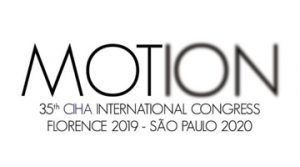
5th CIHA World congress in São Paulo – CALL FOR PAPERS
The CIHA Brazil Committee invites proposals for participation in nine Sessions, six Emerging Scholars Seminars, and a Special Session that will constitute the 35th CIHA World Congress – Motion: Migrations.
The Sessions, Emerging Scholars Seminars, and Special Session are detailed here: https://drive.google.com/file/d/1Qxyun9-gUje83bhCOGtt_d6p8EEMPmFF/view
New Media Caucus (NMC)
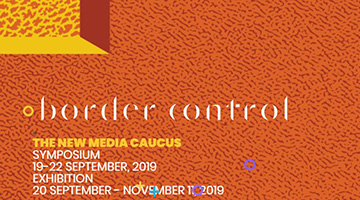 Border Control Symposium and Exhibition
Border Control Symposium and Exhibition
The New Media Caucus (NMC) is proud to present the 2019 Symposium and Exhibition, Border Control at the University of Michigan, Penny W. Stamps School of Art and Design and the Stamps Gallery. The symposium will take place on 19th – 22nd September, 2019, and the exhibition is from 20th September – 11th November, 2019. Keynote Speaker, Vinay Gupta will present a lecture, “Cities that will Walk Away” on 19th September at 5:10pm For more information about the events please visit our website: http://bordercontrol.newmediacaucus.org/
Design Incubation
Colloquium 6.1: Quinnipiac University
Design Incubation Colloquium 6.1 (#DI2019oct) will be held at the School of Communications at Quinnipiac University on Saturday, October 5, 2019.
https://designincubation.com/publications/colloquium/colloquium-6-1-quinnipiac-university/
Practicing Type in the Age of Screens
Saturday, November 9, 2019. 2-5pm. Type Directors Club, NYC
Typeface design and the implementation of typography has never been more exciting. In many cases, type is presented on monitors, tiny and huge electronic visual displays, i.e., screens. In collaboration with the Type Directors Club, Design Incubation will moderate a panel discussion among design innovators about their design and use of type in today’s changing environment. Panelists include Jason Pamental, Javier Mavromantes, Nancy Campbell.
CFP: The Fellowship Program at Design Incubation 2020
Call for Participation: 3-day academic design research and writing workshop in New York City. June 4-6, 2020. Application deadline, October 15, 2019.
Target Audience: Design academics in one or more of the following areas: graphic design, information design, branding, marketing, advertising, typography, web, interaction, film and video, animation, illustration, game design. Full-time tenure track or tenured faculty are given preference but any academic may apply.
https://designincubation.com/call-for-submissions/cfp-the-fellowship-program-at-design-incubation-2020/
CFP: The Design Incubation Residency at Haddon Avenue Writing Institute 2019
Rolling acceptances until Sept 30, 2019. Only 14 seats are available for this event. This 3-day residency allows researchers and scholars time to work on existing writing projects or to start a new writing project. The residency is open to design faculty and to those working in related fields.
https://designincubation.com/design-events/the-design-incubation-residency-at-haddon-avenue-writing-institute-2019/
CFP: A Day of Writing
Come spend an uninterrupted day working on a writing project.
Quinnipiac University School of Communications, October 6th 2019.
https://designincubation.com/design-events/a-day-of-writing/
CFP: Colloquium 6.3: Fordham University
Call for design research abstracts. Deadline: Saturday, December 28, 2019.
https://designincubation.com/call-for-submissions/colloquium-6-3-fordham-university-call-for-submissions/
Association of Art Museum Curators (AAMC)
Apply for AAMC Foundation’s 2020 Engagement Program for International Curators
The AAMC Foundation Engagement Program for International Curators is seeking eligible international and US-based curators interested in pursuing a year-long partnership dedicated to professional development and exchange.
At the core of this Program is a 12-month partnership between a non-US based curator (International Awardee) and a US-based curator (US Liaison) dedicated to reflecting on and developing self-identified areas of advancement with each other. Made possible by major support from the Terra Foundation for American Art, the Program includes travel funding for International Awardees, a participant stipend for US Liaisons, networking, and more, which are outlined in greater detail in the online application, available here: bit.ly/AAMCApply. Two pairings will be awarded.
Eligible applicants must be art curators working on or having worked within exhibitions and projects that explore historical art of the United States (c. 1500-1980), including painting; sculpture; works on paper, such as prints, drawing and photography; decorative arts; performance; and design (except industrial). Architecture and commercial film are excluded. Native American art is eligible for consideration. Additional requirements include a minimum of 50% of the time for/with non-profit organizations will be considered. Please note that curators working in four-wall collecting and non-collecting, community based, and non-four wall organizations, at any location in the globe are eligible.
Through fostering international relationships between curators, AAMC Foundation aims to not only provide opportunities for professional development and exchange, but also strengthen the international curatorial community and increase awareness of the concerns and needs of curators working outside the US. Visit our website to learn more: www.artcurators.org/page/GrantsTerra.
The online application for International Awardees and US Liaisons opens on Wednesday, September 11, 2019, and are due by 12pm ET on Thursday, October 24, 2019.
—
AAMC Foundation Webinar on Utilizing Community Advisory Groups
Join us on Tuesday, September 24, 2019 from 2:00 – 3:15PM ET to learn about the formation, implementation, and utilization of community partners and advisory groups from a dynamic speaker lineup.
From grassroots organizations to large, landmark institutions, museum teams are increasingly engaging with community members to bring history to bear on the narratives told and to bring forward the value of local knowledge. These consultations help develop and shape exhibition themes and checklists, open conversations on collecting practices and directions, and ensure that museum-generated programs accurately and genuinely reflect and engage their communities. From local focus groups to international convenings, the collaborative aspect welcomes perspectives outside the curatorial department.
This webinar explores a diverse range of current approaches, case studies, and lessons learned—from emerging grassroots efforts to established museum outreach. Speakers will address the value in engaging communities, best practices in developing partnerships and advisory groups, and ways to create meaningful and ongoing valued relationships.
Speakers include René Paul Barilleaux, McNay Art Museum; Adrian Locke, Royal Academy of Arts; Regan Pro, Seattle Art Museum; David Serkoak, Key Collaborator with the Canadian Museum for Human Rights; and Ben Tremillo, San Anto Cultural Arts.
There are only a limited amount of spots available. Registration is required: www.artcurators.org/event/communityadvisory
SHERA
The SHERA Board is pleased to announce that the SHERA Graduate Student / Independent Scholar Travel Grant for the 2019 ASEEES meeting has been awarded to Dr. Yulia Karpova (Central European University). Her paper, “Late Soviet studio ceramics as a site of institutional critique” will be presented during the SHERA-sponsored panel “Culture as Matter.”
An Interview with Amy Meyers, Recently Retired Director of the Yale Center for British Art
posted by CAA — Jul 26, 2019
In June, Amy Meyers ended a long and fruitful career as Director of the Yale Center for British Art, which she led for seventeen years. Prior to her appointment in 2002, she spent much of her career at research institutes including Dumbarton Oaks; the Center for Advanced Study in Visual Arts at the National Gallery of Art, Washington, DC; and The Huntington Library, Art Collections, and Botanical Gardens. She also taught at the California Institute of Technology, the University of Michigan, Mount Vernon College, and Yale, and has written extensively on the visual and material culture of natural history in the transatlantic world.
Joelle Te Paske, CAA Media and Content Manager, corresponded with Amy over email to reflect upon her tenure at the YCBA, her experiences with CAA, and her plans for the future. Read the interview below.
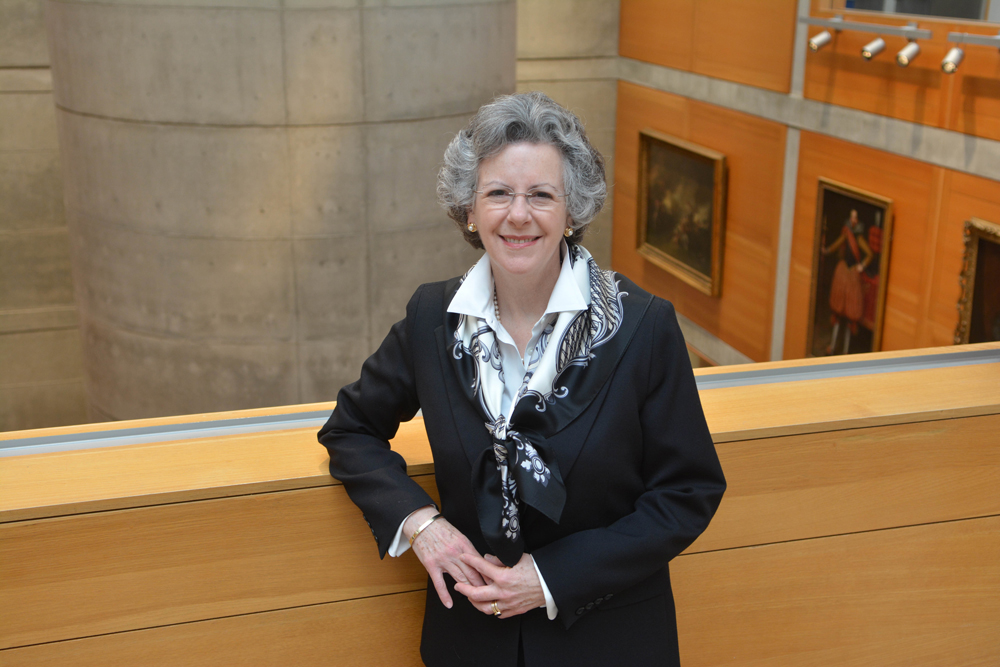
Amy Meyers, Yale Center for British Art, photo by Michael Marsland
Joelle Te Paske: Amy, thank you so much for speaking with us. To begin, what pathways led you to the Yale Center for British Art (YCBA)?
Amy Meyers: There is no question that my experiences as a graduate student at Yale set the stage for my return to direct the Yale Center for British Art 25 years following my arrival as a doctoral candidate in American Studies, in the fall of 1977—the first year the magnificent collections of the newly opened YCBA were accessible to students.
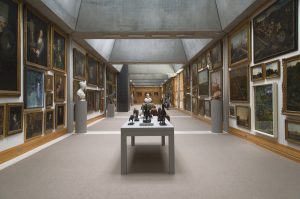
Long Gallery after reinstallation, Yale Center for British Art, photo by Richard Caspole
I had come to Yale to write a dissertation on the photographers who accompanied the federal geological surveys of the American West following the Civil War, and my interest in the art of empire brought me to explore the staggering collections of paintings, prints, drawings, maps, rare books, and manuscripts amassed by the Center’s founder, Paul Mellon, relating to the depiction of the natural world, particularly in the Americas.
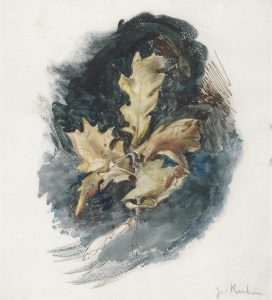
John Ruskin, Study of an Oak Leaf, undated, pen and brown ink with watercolor over graphite heightened with gouache and gum; verso: graphite on paper, Yale Center for British Art, Paul Mellon Collection
The following spring, I enrolled in one of the first courses held at the Center—a seminar on Ruskin, taught by George Hersey. That course included students not only from the Department of the History of Art, but others, who, like me, were interested in the influence of Ruskin’s thought on many aspects of culture, particularly science. Professor Hersey’s important consideration of Ruskin as a major thinker of the nineteenth century, and the discussions that took place in that class between and amongst students, were foundational to my graduate education. I formed collegial friendships with many students who would go on to contribute significantly to art historical scholarship, both in academe and in museums, including David Curry, Bruce Robertson, George Shackelford, Mark Simpson, and Scott Wilcox—and these friendships have informed my scholarship and influenced the way in which I have approached the programs I have had the privilege to run, from the Virginia Steele Scott Gallery of American Art at the Huntington Library, Art Collections, and Botanical Gardens, to the YCBA.
The interdisciplinarity of Professor Hersey’s class reflected Yale’s commitment to exploration across disciplinary boundaries in many areas of study—a commitment that was unusual at American universities in the 1970s. Jules Prown, who had been the YCBA’s first director, creating the institution in concert with Paul Mellon and a distinguished committee of Yale faculty members, was himself devoted to examining the history of art from a broad range of vantage points, and he and his colleagues built that approach into the Center’s culture, both as a research institute and as a public museum with teaching at its heart.

Unidentified man, Paul Mellon, Kenneth Froeberg, and Jules Prown, during the construction of the Yale Center for British Art, 1974, photo by William B. Carter, Yale Department of Public Information, Institutional Archives, Yale Center for British Art
I was privileged not only to study with Jules, but to have him as one of my dissertation advisors. I learned from him the value of the close examination of objects as primary to art historical research, as well as the importance of working collaboratively with groups of scholars in developing the richest, most productive, and enjoyable of research communities. Jules drew around him, through his exciting classes and seminars, a large and devoted coterie of students from across the university who were interested in cross-cultural studies, including art history and material culture—a field he was instrumental in driving forward. Many of the students who took George Hersey’s seminar were part of this group; but others, including Margaretta Lovell (who by then was teaching a course on material culture with Jules), David Lubin, Angela Miller, Rodger Birt, Esther Thyssen, Buffy Easton, Valerie Steele, Catherine Lynn, Rebecca Zurier, Kenneth Haltman, Alexander Nemerov, Richard Powell, and Helen Cooper (who already was serving as Curator of American Paintings at the Yale University Art Gallery) also were active members of Jules’s circle of students (and there were many others who were off writing dissertations, such as Kathleen Foster, or who had graduated relatively recently and were known to us by their groundbreaking work, such as David Solkin). At that time, Bryan Wolf was a young professor of English literature and American Studies who had developed a strong interest in American art, and he also was an important member of Jules’s circle. I was tremendously privileged to have Bryan as one of my dissertation advisors, as well.
The sadly short-lived Center for the Study of American Art and Material Culture, directed by Richard Beard, was established by Robert McNeil, through the Barra Foundation, at the Yale University Art Gallery in the same year that the YCBA opened.
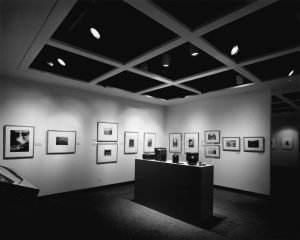
A Survey of American Photographs 1840–1940, installation as presented from March 28–June 6, 1978, organized by the Yale Center for American Art and Material Culture, photo courtesy of the Yale University Art Gallery Institutional Archives
This center both reinforced the community of Americanists at Yale and gave me the opportunity to curate the first of my own exhibitions, American Photographs: 1840 to 1940. The group of Western American historians fostered by my third dissertation advisor, Howard Lamar, and Archibald Hanna, the then-curator of Western Americana at the Beinecke Rare Book and Manuscript Library, also promoted a culture of intellectual exchange, focused quite centrally on the visual culture of the West. Additionally, the American Studies Program offered students and faculty members with cross-disciplinary interests a supportive environment that encouraged innovative, experimental approaches to the study of American culture across the board. Collectively, these centers and programs taught graduate students of my generation at Yale the value of being a member of an engaging and supportive community of intellectual interchange, supported institutionally, and I have no doubt that this experience influenced my interest in being involved in study centers over the course of my professional career.
Indeed, as a graduate student, I was introduced to the vibrant culture of international research institutes when I was awarded a junior fellowship at Harvard University’s Washington-based research institute, Dumbarton Oaks (DO), my dissertation topic having shifted to a broader consideration of the relation of the visual arts to the natural sciences, from the colonial period, through the establishment of the republic, and into the nineteenth century. Some of my closest collegial friendships were formed in the community of DO, including my life-long professional partnership with Therese O’Malley, with whom I presently am organizing an exhibition on John and William Bartram and the emergence of environmental thought in America.
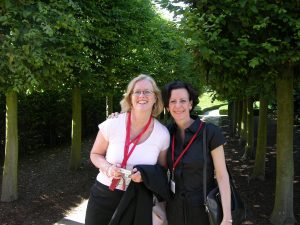
Therese O’Malley and Amy Meyers at a conference at the Royal Botanic Gardens at Kew, 2005.
Therese and I were privileged to be hired by the first dean of the Center for Advanced Study in the Visual Arts (CASVA), at the National Gallery, Henry Millon, to work as predoctoral research assistants for the Architectural Drawings Advisory Group, an international consortium convened at CASVA and supported by the J. Paul Getty Trust to set standards for the scholarly cataloguing of architectural drawings online. This early experience in working with an international group of scholars on one of the first electronic database projects in the history of art stimulated my life-long dedication to advancing the development of electronic tools for art historical research—one that I brought to the Yale Center for British Art when I became director.
The collective of fellowship programs in art history across the museums and research institutes of Washington, DC offered me a rich community of peers as an advanced graduate student and young professional, and this stimulating environment furthered my interest in working within the context of a study center, which had begun at Yale. The appeal of funding art historical research (and research in the humanities more generally) through grants and fellowships was strengthened by the work of my husband, Jack Meyers, an assistant director in the Research Division at NEH at that time—and we have been most fortunate to have developed comparable careers in this regard. While I worked for fourteen years as the Curator of the Virginia Steele Scott Gallery of American Art at the Huntington, which is one of the largest residential fellowship-granting research institutes in the humanities in the world, Jack served as a program officer and then deputy director of the Getty’s Grant Program (now Foundation). We both became fully committed to the support of scholarship internationally, and, over the last years, while I have served as director of the Yale Center for British Art, and CEO of the Paul Mellon Centre for Studies in British Art (PMC) in London, Jack has served as President of the Rockefeller Archive Center. Our complementary positions have allowed us to share our experiences in the running of study centers, which has been wholly gratifying, and, I hope, of benefit to our mutual institutions.
JTP: What would you say are some of the biggest changes you’ve seen during your time at the YCBA?
AM: Certainly the greatest change I have seen in the field of British art over the last seventeen years, which has affected the YCBA and PMC in fundamental ways, and to a certain extent has been promoted by these sister institutions, has been a major shift in vantage point from what commonly has been called the “imperial gaze” to a more global viewpoint. Although by the time I was named director of the YCBA seventeen years ago, the approach to British art had become as much concerned with social history as with connoisseurship, works still were interpreted largely in terms of a relatively closed history of European art. The complex and tragic histories of the British Empire and slave trade were only beginning to affect the ways in which British art was understood, and the canon remained essentially defined as the creation of white, male artists of British birth—or, more generously, of white, male European or colonial American artists who came to practice in the British Isles, or who were associated with British artists and patrons on the Grand Tour.
Over the last years, a sea change has taken place, and not only has the canon expanded—and shifted—to include works by artists from many other parts of the world that came under British dominion or were deeply affected by the Empire, but also by artists of more diverse racial backgrounds and genders. The sense of the West’s ownership of the world on the part of historians of British art has been altered dramatically, and standard practice now insists that even the most traditionally canonical works must be reinterpreted from a global vantage point, and in terms of much larger and more challenging histories.
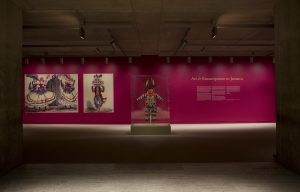
Art and Emancipation in Jamaica: Isaac Mendes Belisario and his Worlds, curated by Tim Barringer, Gillian Forrester, and Barbaro Martinez Ruiz, Yale Center for British Art, 2007, photo by Richard Caspole
JTP: What is a favorite memory—perhaps one that is less well-known—from your time there?
AM: My fond memories from my years at the YCBA—and the PMC—are innumerable, and it is extremely difficult to select a favorite. However, one program stands out as particularly memorable for me personally. In July of 2005, the YCBA co-organized a conference entitled, “Ways of Making and Knowing: The Material Culture of Empirical Knowledge,” with the PMC and the Wellcome Trust Center/Centre for the History of Medicine at University College London (UCL).
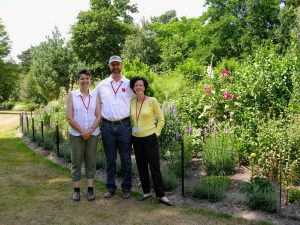
Pamela Smith, Harold Cook, and Amy Meyers, standing in front of a raised flower bed reconstructed from an eighteenth-century plan by garden historian Mark Laird, at Painshill Park, in Cobham, Surrey, during the final session of “Ways of Making and Knowing: The Material Culture of Empirical Knowledge,” July, 2005.
My co-conveners were close associates in the history of science: Pamela Smith, who is the Seth Low Professor of History at Columbia University, and Harold Cook, who, at that time, was director of the Wellcome Trust Center and now is the John F. Nickoll Professor History at Brown University. Beginning with a series of discussions at the Huntington, we planned an interdisciplinary conversation about the material construction of knowledge, examining how artisans and other makers of things informed the ways in which the natural world came to be understood in the West, from the sixteenth-century through the nineteenth. Exploring the relationship between two spheres traditionally understood to be distinct—practical and theoretical knowledge, the lectures and demonstrations were given by the seventy presenters, including art historians and historians of material culture, historians of science, artists, and craftspeople.
The program took place over five days, at sites across London ranging from the Chelsea Physic Garden, the Enlightenment Gallery at the British Museum, the Royal Botanical Gardens at Kew, the Natural History Museum, the Linnean Society, the V&A, and Painshill Park, in Surrey. This experimental program included as many object-study sessions and hands-on making workshops as formal papers, interrogating how the use of natural materials in the processes of making yielded the most profound understanding of nature, feeding science as much as technical knowledge in exciting new ways. A selection of the papers appeared under the title of the conference, in the Bard Graduate Center’s series Cultural Histories of the Material World, published by the University of Michigan Press in 2014. I must say that the support of Brian Allen, at that time the splendid and long-serving Director of Studies of the PMC with whom I had the honor of working closely for ten years, was a special pleasure.
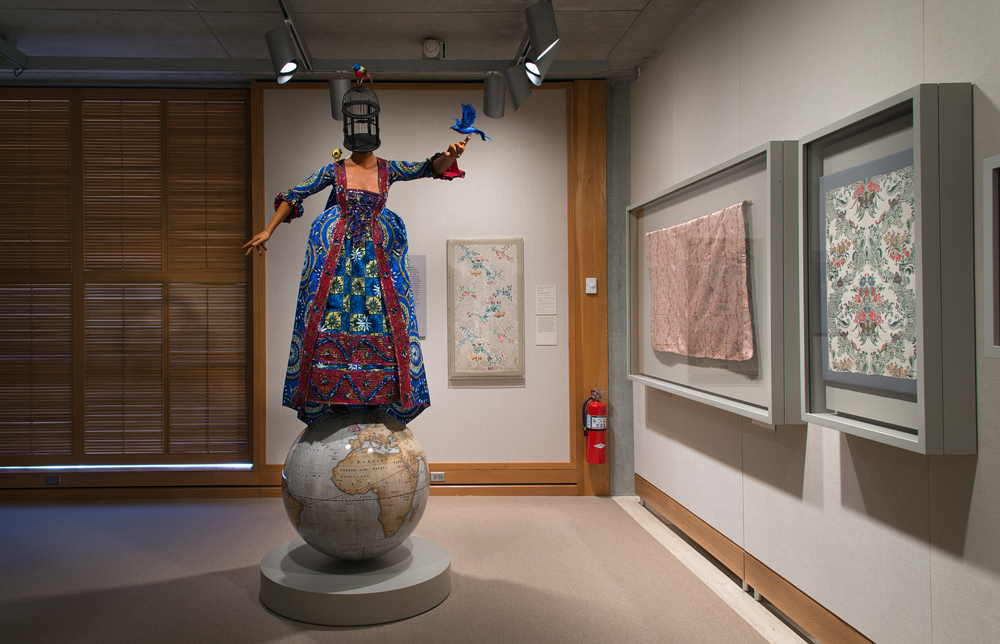
Enlightened Princesses: Caroline, Augusta, Charlotte, and the Shaping of the Modern World installation, including Yinka Shonibare CBE’s Mrs Pinckney and the Emancipated Birds of South Carolina (2017), Yale Center for British Art, photo by Richard Caspole
I also remember with great fondness working with Joanna Marschner, Senior Curator at Kensington Palace, on Enlightened Princesses: Caroline, Augusta, Charlotte, and the Shaping of the Modern World, an exhibition co-organized by the YCBA and Historic Royal Palaces, with the support of the PMC, that was mounted in New Haven and London in 2017. Our mutual interest in women and patronage, particularly in relation to the natural sciences, found its expression in this project, and we look forward to working together on the subject long into the future.
JTP: What is a resource at the YCBA that you think people don’t often know about, but should?
AM: The collection of British art at the YCBA is renowned as the largest and finest outside the UK, comprising over 2,000 paintings; 20,000 drawings and watercolors; 45,000 prints and photographs; and several hundred pieces of sculpture. Much less well known is the institution’s truly glorious rare book and manuscript collection. The Center’s founder, Paul Mellon, began his life as a collector in this field, and over his lifetime he amassed one of the greatest collections formed in the twentieth century, comprising approximately 35,000 titles. Mr. Mellon focused in part on British illustrated books, acquiring the renowned J.R. Abbey collection of British color plate books, which serves as the touchstone for all other collections of this kind. Other major parts of the collection include drawing manuals, sporting books and manuscripts, early maps and atlases, early printed books by Caxton and his contemporaries, and archival and manuscript material relating to British artists, writers, and travelers of all periods.
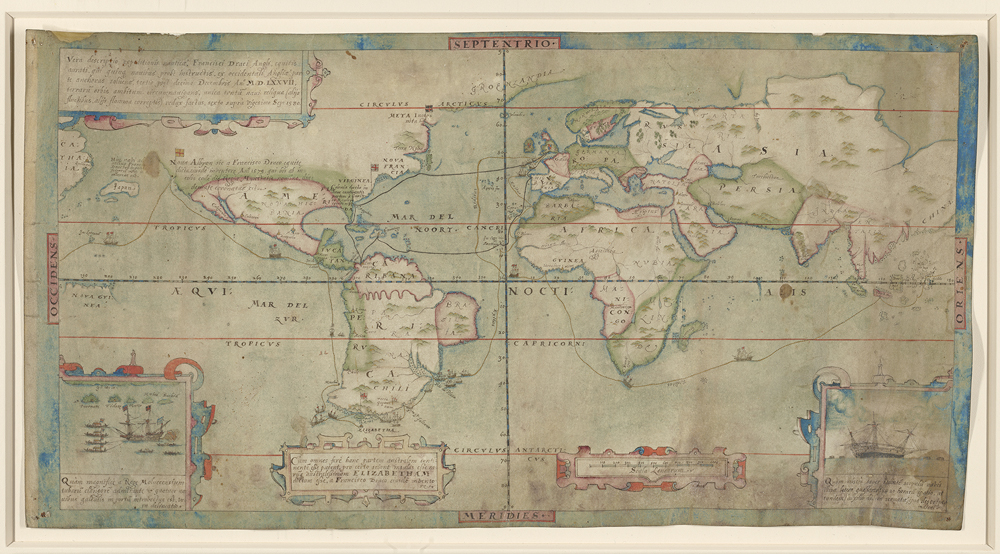
A True Description of the Naval Exploration of Francis Drake, Englishman & Knight, Who With Five Ships Departed from the Western Part of England on 13 December 1577, Circumnavigated the Globe and Returned on 26 September 1580 with One Ship Remaining, the Others Having been Destroyed by Waves or fire, [London (?), ca. 1587], pen and ink and watercolor on parchment, Yale Center for British Art, Paul Mellon Collection
The Rare Books and Manuscripts collection contains splendid photographic holdings, beginning with some of the earliest printed books including original photographic illustrations produced by the first British experimenters with paper-print photography, such as William Henry Fox Talbot. These collections have grown enormously over the years, as have the photographic collections in the Prints and Drawings Department, making the Center one of the most significant repositories of British photographs in the country.
The same holds true for the development of the institution’s collection of contemporary British art, and over the course of this summer, the Center has mounted an exhibition illuminating the role that donors have played in enhancing both areas of the institution’s collections over the last few years. Entitled Photographs/Contemporary Art: Recent Gifts and Acquisitions, the exhibition demonstrates the breadth and depth of these holdings and signals their continued growth.
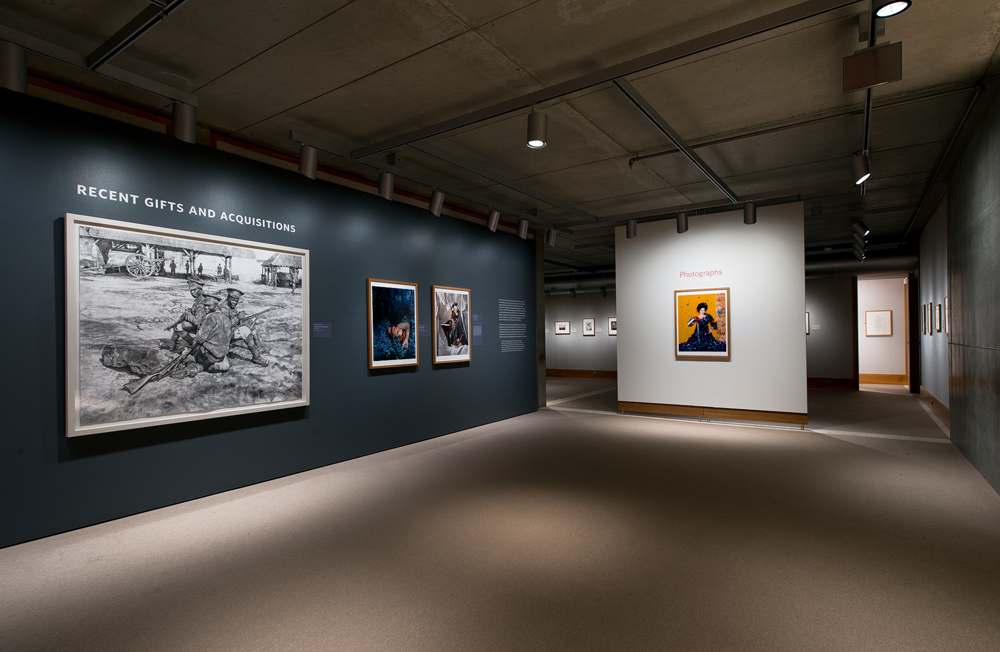
Photographs | Contemporary Art: Recent Gifts and Acquisitions installation, Yale Center for British Art, photo by Richard Caspole
JTP: When did you first become a CAA member? Do you have a favorite memory from a CAA conference?
AM: I have been a member of the CAA for so long that I do not remember precisely when I joined—undoubtedly by the early 1980s, when I was attending conferences regularly in my later years of graduate school. My memories of the very first conference I attended are shrouded in the mists of time, but I believe that I joined a group of Yale graduate students at a conference in New York while I was still enrolled in courses, in the late 1970s.
I have countless happy memories from conferences throughout the years, from sessions I have co-organized on the visual and material culture of natural history with my long-standing colleague, Therese O’Malley, to the multitude of fine papers given by scholars in my own fields of American and British art. Of course, one of the most important functions of the conference is to introduce participants to subjects that lie beyond their own areas of expertise, and I have learned an enormous amount from papers on topics to which I have had little exposure, especially as art history has evolved in such exciting ways over the last years. New methodological approaches are always stimulating to consider, and I particularly have enjoyed learning from the work of younger colleagues. Indeed, the call for papers for next year’s conference promises a rich and important group of sessions that will have me running from one talk to the next throughout the proceedings.
Since 1989, due to my association with The Huntington and the YCBA and PMC, I have had the pleasure of attending the winter meeting of the Association of Research Institutes in Art History (ARIAH), as an affiliated society, which always is held the first day of the CAA conference. Naturally, I also have enjoyed attending reunions of the departments and study centers with which I have been connected. The joint reunion of the YCBA and PMC has been a true pleasure to co-host with the PMC’s current Director of Studies, Mark Hallett, who promotes the mutual interests of his London research center and the YCBA with dedication and inspired vision. Mark and I have been deeply grateful to the Deputy Directors of Research of these sister institutions, Martina Droth and Sarah Turner, for organizing these shared events annually.
I do have one favorite memory that stands out among all others, however, and that is of the 2009 Terra Foundation for the Arts Distinguished Scholar Session, entitled “Generations: Art, Ideas, and Change,” in honor of Jules Prown. Chaired by Bryan Wolf, and including papers by Alex Nemerov, Margaretta Lovell, Jennifer Roberts, Jennifer Greenhill, and Ethan Lasser, the session paid special tribute not only to the professor who had inspired so many of us as graduate students at Yale, but also to the scholar who had informed the work of students pursuing the study of American art and material culture throughout the world through his groundbreaking research and approaches to analysis.
JTP: I imagine it is impossible to summarize the sentiments surrounding a 17-year tenure, but if there was one feeling you could share in the wake of your departure from the directorship of the YCBA, what would you say it is?
AM: The feeling I wish to share is one of excitement.
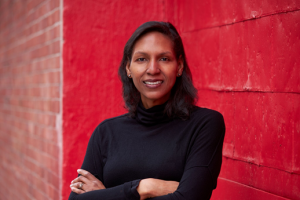
Courtney J. Martin, photo by Argenis Apolinario
As I have indicated, the field of British art–and of art history more generally—is developing and changing in such important ways, and I have no doubt that Courtney J. Martin, who just has begun her first term as the Center’s brilliant new director, will work with her YCBA colleagues not only to continue to introduce the work of new artists to the collection, but to encourage an ever-expanding community of visitors from the university, the city, the region, and the world through innovative displays, exhibitions, publications, and programs. She is a tremendous addition to the impressive complement of collection directors under the excellent leadership of Yale’s Vice Provost for Collections and Scholarly Communications, Susan Gibbons, and I expect that splendid developments are about to take place across all of the university’s museums and libraries with this gifted team in place.
JTP: What are you most proud of having accomplished at YBCA?
AM: My pride lies in what I was able to accomplish in concert with my superlative friends and colleagues: the staff of the YCBA and PMC, Yale students and faculty members, the 250 visiting scholars who have joined our community to pursue research in the YCBA’s collections, our advisory committees and consultants, the PMC’s Board of Governors, and supporters of both institutions. So much has been accomplished collectively that a full review would be impossible, but I will outline some of our most significant collaborative achievements.
Working with museums and cultural institutions across the UK, and in certain instances the United States, we developed a program of over fifty major loan exhibitions which explored a wide range of topics from the early modern period through the current day. These were underpinned by workshops involving students and scholars from around the world, and they were enhanced by an equivalent number of significant publications produced in association with Yale University Press London (YUPL). Approximately forty in-house exhibitions and displays, often developed with undergraduates and graduate students, enriched the exhibition program, examining the Center’s own holdings from important new vantage points.
One such exhibition, Unto This Last: Two Hundred Years of John Ruskin, curated by three of Tim Barringer’s graduate students—Tara Contractor, Victoria Hepburn, and Judith Stapleton—has been in the planning stages for some time as the Center’s central contribution to the bicentennial commemoration of Ruskin’s birth (both critical and celebratory), and it will open on the evening of September 17th of this year, accompanied by a leading-edge catalogue edited by Tim, to which the students, and others, have contributed. I have no doubt that for this cohort of students, the experience of working with Tim on an assessment of Ruskin’s significance as a thinker for the modern world will be as important as George Hersey’s Ruskin seminar was for me and my own group of peers over forty years ago.
During the last seventeen years, the research cultures of the YCBA and the PMC were augmented through the joint efforts of a new Research Division at the Yale Center and an amplified program at the London Centre, which also produced a superb run of publications with YUPL. Support of scholars across the field of British art was substantially increased through the PMC’s grant program and the YCBA’s visiting scholars program. The PMC and YCBA also collaborated to develop an innovative online journal, British Art Studies, which is fully accessible, free of charge, to the world.
The YCBA’s education program developed magnificently, as well. Our docents toured 92,929 school-age students through the galleries, and an average of 88 Yale classes utilized the collections each year, with nearly 14,000 Yale students visiting the Study Room either with a class or to use collections on their own. The Center hosted 903 undergraduate student interns and workers, 76 graduate student research assistants, and 20 postdoctoral research associates who received doctorates from other universities. Empirically based programs focused on close looking in the galleries, designed to increase both the sensitivity and diagnostic skills of medical and nursing students (the first such programs in the world), continued to develop for Yale graduate student in other fields.
Additionally, creative learning programs for teenage girls on the autism spectrum were put into place, and a teaching relationship with Chapel Haven, a home for adults with cognitive disabilities, flourished. The Center actively joined the university’s mentorship program to engage undergraduates who have attended New Haven public schools, or approved charter schools, and who have been awarded New Haven Promise scholarships, in professional experiences over the summer months. We benefitted from the fine work of those who were participants in the program, and we were able to add several extremely talented young people to our permanent staff from the program.
The collections also developed in exciting ways over the years, with curators adding to the historic corpus with important works from the Tudor period through the mid-twentieth century, and with modern and contemporary works expanding the Center’s holdings into our own time.
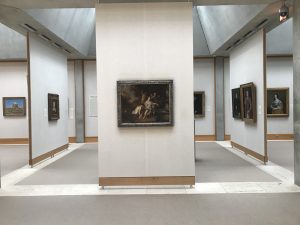
Fourth-floor gallery installation, including the new acquisition of Peter Lely’s Diana and her Nymphs at a Fountain (ca.1648), Yale Center for British Art, photo by Edward Town
Sculpture became a special focus of the acquisitions program, along with photography and modern and contemporary art. In all, almost 9,000 objects and collections across the curatorial departments amplified the Center’s holdings for teaching, research, and exhibition.
A program to make the Center’s entire collection accessible virtually, placed 90,000 records online, and 78,000 high-resolution digital images of works in the public domain freely available to the world for any use, in concert with Yale’s Open Access policy. The Center now seeks to connect these online collections with others across the university and the globe, through linked open data, allowing audiences worldwide to explore the rich global history of British art.
We also worked with collections across the university to develop a state-of-the-art conservation program on Yale’s West Campus, and to create the Institute for the Preservation of Cultural Heritage, with a major conservation science program intended not only for the technical assessment of our own collections, but also to address global conservation needs. Additionally, the Center published a model conservation plan for its landmark building designed by Louis I. Kahn, which has helped to steer the conservation of other modern buildings of cultural significance according to best practices. This plan allowed a three-phased conservation program to address the physical needs of the Kahn building, and following the conservation of the interior spaces and upgrading of the mechanical systems, a freshly conceived display of the art collections was installed, entitled “Britain in the World.”
JTP: What are you most excited about when you think of your next steps? Are there projects you are looking forward to?
AM: Returning to my own scholarship is a great joy, and I am beginning to work with Therese O’Malley to co-curate an exhibition examining the naturalists John and William Bartram and the early development of environmental thought in North America and the transatlantic world—a project that derives from the dissertations on which we worked together so many years ago, but that now is informed by the scholarship of those working on the culture of natural history in the Americas from new points of view.
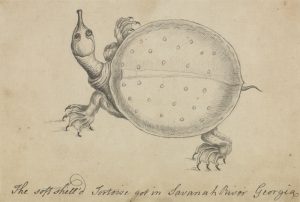
William Bartram, The Soft Shell’d Tortoise Got in Savanah River Georgia, ca. 1773, gray wash, pen and black ink, and graphite on paper, Yale Center for British Art, Gift of Charles Ryskamp
The Bartrams, who created one of the first scientific gardens in the British colonies, began to be mythologized in their own time, and have been the focus of academic study since the nineteenth century. However, their work is just beginning to be assessed in relation to the knowledge they gained not only from Native American peoples they encountered on their collecting expeditions, but from enslaved peoples of African descent in bondage to the Bartrams’ family members and friends throughout the southern colonies, as well as those William himself enslaved on a small, short-lived plantation that he attempted to establish in Florida. This project will serve as a case study examining the diverse systems of knowledge about nature that converged and collided in this period, resulting in new conceptions of a wholly interconnected cosmos, in a constant state of flux.
Amy Meyers BIOGRAPHY
Amy Meyers (Yale PhD, American Studies, 1985) retired from the directorship of the Yale Center for British Art on June 30th of this year. Prior to her appointment in July of 2002, she spent much of her career at research institutes, including Dumbarton Oaks; the Center for Advanced Study in Visual Arts at the National Gallery of Art, Washington, D.C; and The Huntington Library, Art Collections, and Botanical Gardens, where she served as Curator of American Art from 1988 through June of 2002. Meyers also has taught the history of art at the California Institute of Technology, the University of Michigan, Mount Vernon College, and Yale. As Director of the Center, Meyers sought to strengthen the institution’s educational and research initiatives. She endeavored to promote a rigorous academic publication program in association with Yale University Press and to develop an exhibition program of the highest scholarly standard in partnership with major museums across Europe and the United States. She expanded the Center’s fellowship program; amplified the teaching mission in concert with departments and programs across the university; and promoted the cataloguing of the collections on-line, with free and open access to all images in the public domain. Meyers supported the creation of a conservation plan for the institution’s landmark building, designed by Louis I. Kahn, and she oversaw the conservation of the building, as well as two full-scale reinstallations of the entire collection.
Meyers has written extensively on the visual and material culture of natural history in the transatlantic world, serving as editor of Knowing Nature: Art and Science in Philadelphia, 1740 to 1840, with the assistance of Lisa Ford (New Haven: Yale University Press, 2011); with Harold Cook and Pamela Smith, Ways of Making and Knowing: The Material Culture of Empirical Knowledge (Ann Arbor: The University of Michigan Press, 2011); with Therese O’Malley, The Art of Natural History: Illustrated Treatises and Botanical Paintings, 1400-1850 (Washington, D.C.: National Gallery of Art, Studies in The History of Art Series, 2008); Art and Science in America: Issues of Representation (San Marino: The Huntington, 1998); and, with Margaret Pritchard, Empire’s Nature: Mark Catesby’s New World Vision (Chapel Hill: University of North Carolina Press, 1998). She also has organized numerous international symposia in the field, including Curious Specimens: Enlightenment Objects, Collections, Narratives (with Luisa Calè, Michael Snodin, Margaret Powell, and Cynthia Roman; London, 2010), Ways of Making and Knowing: The Material Culture of Empirical Knowledge (with Hal Cook and Pamela Smith; London, 2005); and ‘Curious in Our Way’: The Culture of Nature in Philadelphia, 1740 to 1840 (Philadelphia, 2004). With Therese O’Malley, she currently is co-organizing an exhibition on John and William Bartram and the emergence of an environmental conception of the natural world in colonial and early republican America, to be mounted in 2024.
International Review: Sun and Sea in Venice, Lithuania’s Prize-Winning Pavilion at the 2019 Venice Biennale
posted by CAA — Jul 25, 2019
The following article was written in response to a call for submissions by CAA’s International Committee. It is by Inesa Brasiske, a Lithuanian art historian, lecturer, and recent graduate from the program in Modern and Contemporary Art: Critical and Curatorial Studies (MODA) at Columbia University, New York.
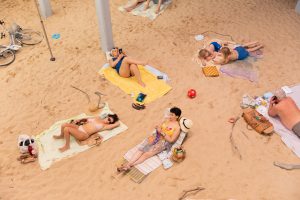
Figure 1. Sun & Sea (Marina), opera-performance by Rugile Barzdziukaite, Vaiva Grainyte, Lina Lapelyte at Biennale Arte 2019, Venice. Photo: © Andrej Vasilenko
Upon entering the former shipyard in the secluded Marina Militare complex located a few steps from the Arsenale, one finds a beach. More than a dozen sunbathers lie drowsily on pastel colored towels among their absentmindedly-scattered stuff, preoccupied with the usual holiday business (Fig. 1). One by one they sing out their monologues, occasionally growing into undulating choruses. The performers chant their personal dramas, complaints, and joys alongside sunscreen instructions and deadpan morning routines as viewers peruse the scene from above (Fig. 2).
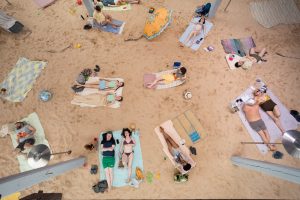
Figure 2. Sun & Sea (Marina), opera-performance by Rugile Barzdziukaite, Vaiva Grainyte, Lina Lapelyte at Biennale Arte 2019, Venice. Photo: © Andrej Vasilenko
An opera-performance for thirteen voices, Sun & Sea (Marina) was selected to represent Lithuania at this year’s Venice Biennale, winning the country its first Golden Lion for best national pavilion. Noted by the jury for its experimental spirit and site-specificity, the work was created by three Lithuanian artists: filmmaker and director Rugilė Barzdžiukaitė, writer Vaiva Grainytė, and composer and artist Lina Lapelytė. It is the second time the all-female trio united their forces in this genre. Their debut work, the opera Have a Good Day! (2013), focused on the inner lives and work routines of cashiers in a shopping center. With this follow-up, the artists continued to tap into the subject of reckless consumerism, accompanied by the same physical and emotional exhaustion that framed their first work, this time taking their exploration in an eco-critical direction.
The libretto is a set of individual, discrete stories stitched together by Grainytė who, with a poet’s economy, delivers a memorable spectrum of characters, including a wealthy mother recounting her son’s travel adventures, a workaholic engaged in self-analysis, and twins envisioning a 3D-printed biosphere. The text is charged with humor and absurdist juxtapositions in a surrealist vein; viewers witness an uneasy morphological sisterhood of floating jellyfish with plastic bottle caps, disturbing scenarios of picking chanterelles in the midst of winter, or drinking piña coladas at a barrier reef. These evocative narratives unfold through a minimalist score for synthesizer and voice composed by Lapelytė and sung by a group of performers with divergent musical backgrounds. Catchy melodies with repeating pulsing patterns running through high pitched arias and dreamy lullabies are responsible to a large extent for luring viewers into this ambiguous zone of relaxation and oblivion in the face of looming ecological disaster.
One of the most striking aspects of Sun & Sea (Marina) is the atypical positioning of the viewers vis-à-vis the scene, as they experience the opera-performance while looking down from the mezzanine which frames the sandy seaside into a horizontal tableau peppered with human and, occasionally, other-than-human bodies (Fig. 3). The director and scenographer, Barzdžiukaitė, brings a filmmaker’s eye to the work; the most recent of her own films is itself calibrated on an aerial perspective of a cormorant colony at the Lithuanian seaside. In the opera, the specific viewpoint works as a conceptual device aptly playing into the ecological theme of the piece. The non-human perspective that the audience embraces points to the limits of the anthropocentric view and suggests something alarming and at the same time slightly comical about the human species in all its flatness.
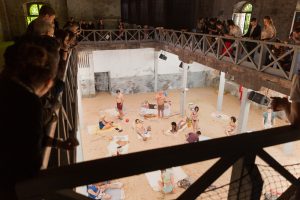
Figure 3. Sun & Sea (Marina), opera-performance by Rugile Barzdziukaite, Vaiva Grainyte, Lina Lapelyte at Biennale Arte 2019, Venice. Photo: © Andrej Vasilenko
The opera was first shown in Lithuania in 2017. Arranged in the atrium of the National Gallery of Art in Vilnius, the Lithuanian version was a slightly longer piece, repeated as a series of performances throughout one day. After its premiere, the work traveled to Germany, where it was shown in a former movie theater as part of the Staatsschauspiel Dresden theater’s repertoire. It is in Venice, however, that the work has been given its most complex treatment, fully exposing its eco-critical and social potential. The opera turned into an endurance performance-cum-installation, running continuously for eight hours at a time, with no beginning or end, once (and more recently twice) a week, while for the rest of the time it is presented as a (post-apocalyptic?) sound installation devoid of any living bodies or voices. The authors did not limit their open-ended approach to experimenting with new formats alone; they also responded to local resources and communities. Under the curatorship of Lucia Pietroiusti, Curator of General Ecology and Live Programs at the Serpentine Galleries in London, the artists invited Venetian residents to perform the piece during the long run of the Biennale, commissioned the last existing printing house in the city to print the exhibition catalogue, and, together with Benjamin Reichen from the Åbäke design collective, collaborated with inmates of a local prison in a silkscreen workshop to produce the cover of the opera’s LP.
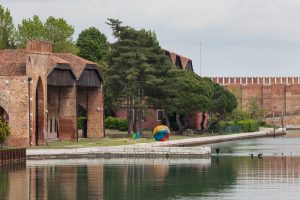
Figure 4. The Marina Militare complex, where Sun & Sea (Marina) is installed. Photo: © Andrej Vasilenko
Where much of ecologically oriented art tends to amplify our sensations in order to enable us to hear more sharply and see more clearly the scale of the climate crisis and ecological collapse, Sun & Sea (Marina) operates on a rather different register. A condensed image of the status quo of the contemporary world and its dystopian future is communicated through the recognizable, the quotidian, the banal. The durational aspect of the work, which puts seemingly surplus non-scripted real-life experiences on view—performers eating their lunch, chatting, getting exhausted and resting, kids running free and playing around, dogs barking—strengthen this realistic effect as does the participatory element inviting viewers to spend some time on the beach among the singing performers.
In the end, there might be no sea in the shipyard, but the beach there is real, and it mirrors our own day-to-day needs and deeds enmeshed in the forces of late capitalism punctuated by the logic of efficiency and endless consumption of goods as well as experiences. The end of the world here is void of spectacular images and sounds, but rather presents itself as what environmental writer Rob Nixon terms a “slow violence,” wherein ecological catastrophe does not occur in a sudden blaze but in a gradual relentless deterioration. Representation of the latter, Sun & Sea (Marina) seems to propose, curiously lies between accurate account and eloquent visionariness.
CWA Picks for Summer 2019
posted by CAA — Jul 16, 2019
CAA’s Committee on Women in the Arts selects the best in feminist art and scholarship to share with CAA members on a monthly basis. See the picks for July and August below.
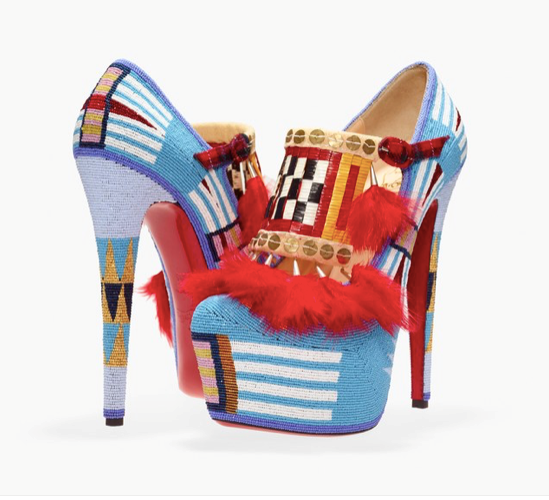
Figure: Jamie Okuma (Luiseño/Shoshone-Bannock, born 1977), Adaptation II (2012), shoes designed by Christian Louboutin, leather, glass beads, porcupine quills, sterling silver cones, brass sequins, chicken feathers, cloth, deer rawhide, buckskin, 8 5/8 x 3 ¼ x 9 3/16 in. (each). Minneapolis Institute of Art, Bequest of Virginia Doneghy, by exchange 2012.68.1a,b
Hearts of Our People: Native Women Artists
Minneapolis Institute of Art
June 2 – August 18, 2019
Hearts of Our People: Native Women Artists is the first-ever museum retrospective of Native American and Canadian female artists. It is guided by three key themes: legacy, relationships, and power, and includes works by more than seventy women artists made in a variety of media, from textiles and bead work to digital arts. The show welcomes visitors with a parked customized 1985 Chevy El Camino fabricated by the mixed-media artist Rose Simpson. It pays homage to Maria Martinez, a potter and the first self-identified, non-anonymous Native artist. The car is outfitted with decals inspired by Pueblo ceramics often designed by women, yet typically unacknowledged. This work, among others on display in this exhibition, addresses the silenced narratives and forgotten, uncredited works of Native American women, offering multiple perspectives on othering, colonization, cultural appropriation, and victimization of practices considered feminine.
Amazonki
Galerie Gmurzynska Zürich, Switzerland
June 8 – September 8, 2019
The title of the exhibition, Amazonki, refers to the Russian word for “Amazons,” in Greek mythology a tribe of women warriors known for their courage. Benedikt Livshits, a poet and a writer, first used this term to address the female Russian avant-gardes, who were described as “real Amazons, Scythian riders.” This exhibition features a selection of remarkable works across different media by women artists of the Russian vanguard, including Maria and Xenia Ender, Natalia Goncharova, Liubov Popova, Olga Rozanova, Nadezhda Udaltsova, and Varvara Stepanova. Their pioneering works from the early 20th-century Russia were significant to the formation of new art movements and redefined the status of female artists.
Filipa César. Quantum Creole
Calouste Gulbenkian Museum, Lisbon, Portugal
May 31 – September 2, 2019
Filipa César’s installation and essay documentary film are featured at the Calouste Gulbenkian Museum and raise issues about colonialism and gentrification on the Bissagos Islands. The project explores the dynamics of Creolization and the subversive dimension of linguistic codes. César’s moving images are characterized by tensions between oppositions: reality and fiction, present and past, stillness and motion. In this exhibition her cinematographic language concerns poetics of resistance within colonial occupation. It is used to investigate notions of weaving and acts of writing in relation to new digital economies. She engages various spatialities and agencies to investigate a subversive potency of quantum weaving against the engineering of binary extractive epistemologies.
Lee Krasner: Living Colour
Barbican Art Gallery
May 30 – September 1, 2019
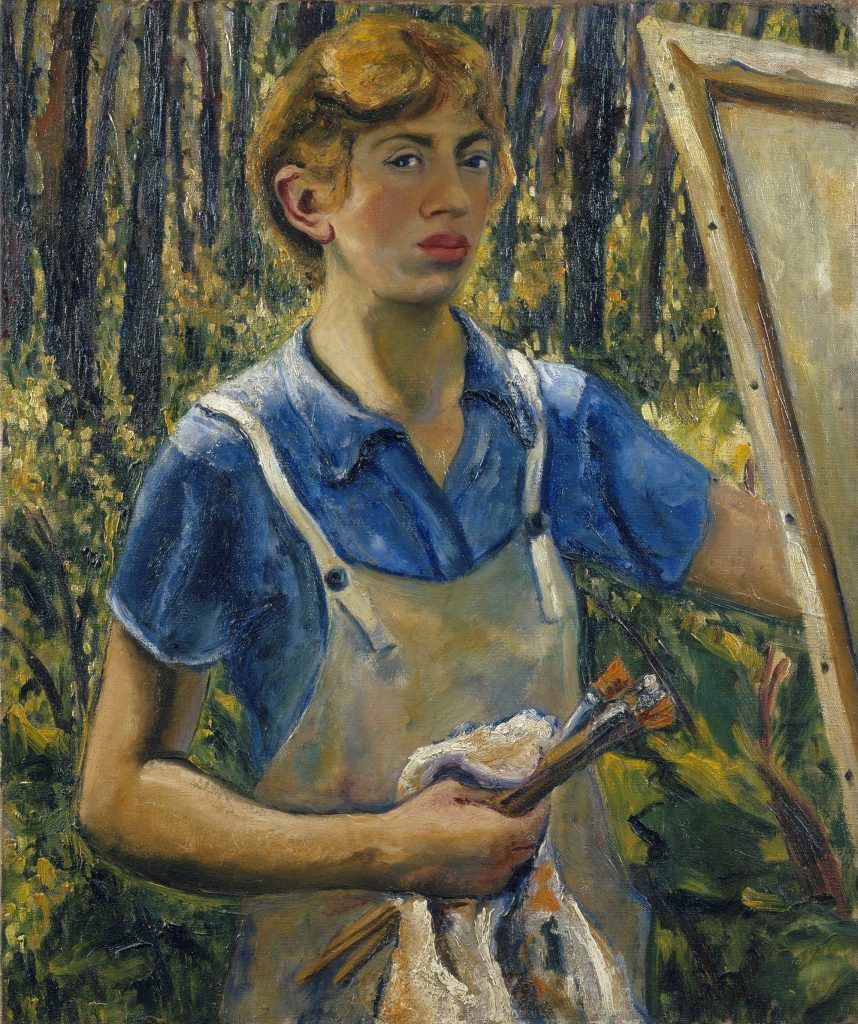
Figure: Krasner, Self-Portrait, c. 1928, The Jewish Museum, New York. © The Pollock-Krasner Foundation. Courtesy the Jewish Museum, New York
“To whom shall I hire myself? What beast must one adore? What holy image attack? What hearts shall I break? What lie must I maintain? In what blood must I walk?” These ferocious lines from Arthur Rimbaud’s poem A Season in Hell were transcribed on Lee Krasner’s (1908-1984) East Village studio wall at 51 East Ninth Street in Manhattan and still pack a punch. They demand our attention just as the formidable career of this legendary Abstract Expressionist artist. The Barbican’s Lee Krasner: Living Colour is the first traveling retrospective on the US artist organized in Europe, curated by Eleanor Nairne. Krasner’s first survey presentation was at the Whitechapel Gallery in London in 1965. The accompanying exhibition catalogue, edited by Nairne with essays by Katy Siegel, John Yau, and Suzanne Hudson, brings further attention to Krasner’s multifaceted personal history, education, and artistic relationships. While significant art historical scholarship was previously established in publications on Krasner, including Ellen Landau’s catalogue raisonné (1995) and Joan Marter’s Women of Abstract Expressionism (2016), this catalogue assesses broad connections and cuts a swath through the artist’s extensive oeuvre, consuming discourse, and marriage to Jackson Pollock. Krasner was renowned and likewise criticized for her perpetual desire to change artistic styles (a problematic issue highlighted in Abstract Expressionist criticism) and tendency to recycle earlier works in the process of remaking new ones. Living Colour is an ambitious curatorial enterprise and offers that there is always room for periodic review and assessment of the depth of women’s creativity and tenacity negotiating the modern male environment of New York in the mid-1940s and 1950s. As much as Krasner looked to the past to clarify her vision, Living Colour affords us the chance to appraise her vast development, rethink her vernacular and personally direct expression, repetition of cycles, utilization of collage, and influences of language and narrative.
Affiliated Society News for June 2019
posted by CAA — Jun 06, 2019
Affiliated Society News shares the new and exciting things CAA’s affiliated organizations are working on including activities, awards, publications, conferences, and exhibitions.
Interested in becoming an Affiliated Society? Learn more here.
American Society of Appraisers
The 2019 ASA Personal Property Connoisseurship Conference – NY will be held at the Marriott Marquis centered in the heart of New York City. With a focus on The Fine and Applied Arts Professional in the 21st Century: How to Adapt, Function and Excel, this intensive three-day conference will provide hard-to-obtain insights into key topics and issues facing personal property appraisers and other art industry professionals. Connect with experts, scholars, and allied professionals from across North America. Presenting speakers include individuals from the industry media, specialty auction houses, galleries, museums, and academia, among others. Register here: http://www.appraisers.org/Education/conferences/personal-property-conference
Association of Art Museum Curators (AAMC)
ASSOCIATION OF ART MUSEUM CURATORS FOUNDATION
Join us this June for a series of three webinars that will restructure and rethink how we consider the topic of management. By focusing on Navigation, Environment and Advancement, the webinars will break with the traditional hierarchical and vertical manner in which conversations around management are typically approached. Each program will present dialogues relevant to all career stages, and will consider ways in which the topic can impact sense of self, well-being, and personal success.
Webinar 1: Navigation – June 11, 2019
Webinar 2: Environment – June 18, 2019
Webinar 3: Advancement – June 25, 2019
Organized and hosted by the AAMC Foundation the series is open to all, with AAMC members receiving discount admission. Limited space is available, register today!
ASSOCIATION OF ART MUSEUM CURATORS (AAMC) & AAMC FOUNDATION
AAMC members are invited to Submit a Session Proposal for the 2020 AAMC & AAMC Foundation Conference, slated for May 2 – 5, 2020 in Seattle, WA. We are seeking proposals on the topic of advancing curatorial work and art organizations beyond traditional and perceived thresholds and boundaries. In selecting this topic, we anticipate dialogues reconsidering linear narratives, challenging concepts of borders, investigating social and cross cultural interactions, and engaging in activism.
We request proposals considering the full spectrum of interpretations, looking at possible topics holistically and not solely through the curatorial lens. Sessions should propose discussions acknowledging community, which involves our workplace colleagues and partners; donors and sponsors; visitors and neighbors; for-profit arts sector; and more. As with all our programming, the proposals should be inclusive and welcoming of a diverse audience. Review the full guidelines and submit your session proposal before 5PM ET on Monday, June 24, 2019.
ASSOCIATION OF ART MUSEUM CURATORS FOUNDATION
Applications are open for AAMC Foundation’s Mentorship Program, which gives early- to mid-career curators opportunities to advance their professional development, learn about important issues in the field, share ideas and cultivate strong bonds with peers, and develop a working relationship with a senior curator. The program’s goal is to advance the skills, experience and knowledge needed to succeed in a curatorial career, not specifically develop a singular curatorial or scholarly project. All Mentees are provided funding to accommodate program components, including travel and other benefits, which are outlined in greater detail here. A group of curator jurors will select ten mentees for 2019-2020 Program, with Mentees and Mentors announced this July.
Applications are due by 12PM ET on Tuesday, June, 25, 2019. Click here to learn more and submit your application today!
Association for Latin American Art (ALAA)
ALAA Awards
In addition to the annual book award, ALAA announces two new awards. See the links for details.
ALAA-Arvey Foundation Book Award
ALAA-Arvey Foundation Exhibition Catalogue Award
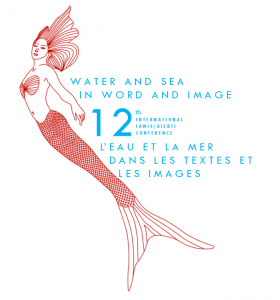
International Association of Word and Image Studies (IAWIS)
CFP for the 2020 Conference in Luxembourg: https://waterandsea2020.uni.lu/program/
American Institute for Conservation
Following a successful Annual Meeting in Connecticut, we are looking forward to our 2020 Annual Meeting in Salt Lake City! The theme will be “Conservation – Reactive and Proactive.” The call for papers will open later this summer, please continue to check our site for updated information.
If you are interested in learning more about conservation and supporting the essential work performed by conservators and preservation professionals, become a Friend of Conservation! Friends receive exclusive insights into conservation, including tips on preserving personal collections, and sustain key programs that promote the preservation of all cultural heritage. Learn about the benefits of being a Friend and how you can help save the art and artifacts that keep our memories alive. Support the Foundation for Advancement in Conservation through www.culturalheritage.org/friends.
International Sculpture Center
Sculpture magazine is thrilled to announce its new website. Go to www.sculpturemagazine.art for reviews, features, news, videos, and other daily content.
Attend workshops, studio tours, and network with artists at the 29th International Sculpture Conference in Portland, OR. Registration opens June 11th at www.sculpture.org/portland19.
Society of Architectural Historians
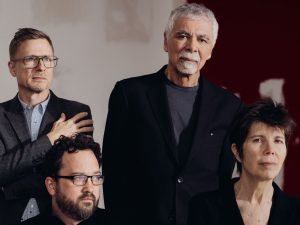
Photo: Geordie Wood, courtesy of DS+R
The Society of Architectural Historians will present the inaugural SAH Change Agent Award to the partners of the New York architecture firm Diller Scofidio + Renfro—Elizabeth Diller, Ricardo Scofidio, Charles Renfro and Benjamin Gilmartin—at a reception at the Century Club in midtown Manhattan on July 17. The award recognizes DS+R for their innovative, paradigm-shifting work, which takes an interdisciplinary approach to design with a focus on cultural and civic projects. Proceeds benefit SAH educational programs and publications, and the ongoing restoration SAH’s landmark headquarters, Charnley-Persky House (1891–1892), designed by Adler and Sullivan with Frank Lloyd Wright.
Nominations for the SAH Publication Awards and the SAH Award for Film and Video are open through July 31. The Publication Awards recognize the most distinguished publications in architectural history, urban history, landscape history, preservation, and architectural exhibition catalogues. The SAH Award for Film and Video was established in 2013 to recognize annually the most distinguished work of film or video on the history of the built environment.
The SAH Board of Directors seeks nominations for the 2020 class of SAH Fellows, those professionally active or retired individuals who have distinguished themselves by a lifetime of significant contributions to the field of architectural history. Deadline August 1.
The SAH Nominating Committee seeks your nominations for five new SAH Board members and a Second Vice President who will begin their terms after the Seattle annual conference in April/May 2020. Deadline August 1.
Graduate students and emerging scholars are invited to apply for the SAH Study Program Fellowship to attend the SAH Field Seminar to Japan, December 6–18. The tour will be led by Ken Tadashi Oshima. The fellowship covers the single occupancy price of the tour and includes a travel stipend. Deadline August 2.
SECAC
On behalf of the SECAC Nominating Committee, First Vice-President Lawrence Jenkens announced that the 2019 SECAC election results have been finalized. The following members have been elected to the SECAC Board of Directors for a three-year term of appointment. For Arkansas, Dito Morales, Associate Professor of Art History at the University of Central Arkansas, was re-elected to a second term. For Florida, Jeff Schwartz, Dean of Undergraduate Studies and Associate Vice-President of Academic Affairs at Ringling College of Art and Design was elected to his first term. For Mississippi, Elise Smith, Professor of Art History and Sanderson Chair of Arts and Sciences at Millsaps College in Jackson, Mississippi, was elected to her first term. Smith previously served on the SECAC Board of Directors from 2000 to 2006. For Tennessee, Christina Renfer Vogel, Assistant Professor of Painting and Drawing at the University of Tennessee at Chattanooga and 2019 SECAC Conference Co-Director, was elected to her first term. For the First At-large Seat, Dennis Ichiyama, Purdue Univeristy Professor of Graphic Design emeritus, was re-elected to a second term. The SECAC Nominating Committee thanks all members who ran for Board seats this year.
Association of Greek Art Historians (EEIT)
The Association of Greek Art Historians (EEIT) hosted a number of distinguished speakers in the context of its 2019 Lecture Series. The aim of the series is to engage a broader audience and promote the discipline of art history in the wider public sphere in Greece. The topics ranged from global art history to the art of the periphery, addressing theoretical and methodological issues of contemporary relevance. Concurrently, novel interpretations of modernism were proposed from the vantage points of both the center, a eurocentric perspective, and the periphery, the lens of the ‘european other.’ James Elkins, E.C. Chadbourne Professor at the School of the Art Institute of Chicago, talked about the “The End of Diversity in Writing about Art” (January 11, 2019, Benaki Museum, 138 Pireos St., Athens, Greece). Elkins proposed that despite recent interest in global artistic production, writing about art is primarily characterized by a hegemony of western theoretical discourses and related practices. Mark Crinson provided an enhanced reading of modernist architecture through the ideals of internationalism in a lecture entitled “Babel as Modernism” (April 11, 2019, Athens School of Fine Arts, Athens, Greece). Mark Crinson is professor of architectural history at Birbeck, University of London and president of the European Architectural History Network (EAHN). Matthew Rampley shared initial thoughts and material related to the European Research Grant project Continuity / Rupture: Art and Architecture in Central Europe 1918-1939 that he is currently leading from Masaryk University in Brno in the Czech Republic. The lecture was entitled “A Legacy of Empire? Art and Architecture in Central Europe after 1918” and examined how ‘modernist’ art was deployed in Central Europe to create and enforce national identities at the aftermath of the collapse of the Habsburg Empire after the First World War. (May 17, 2019, National Hellenic Research Foundation, Athens, Greece).
Design Incubation
Calls for Participation: Design Incubation Upcoming Events
Call for Entries: 2019 Communication Design Educators Awards
An international juried competition of communication design research, practice, teaching, and service. Expand the design record, promote excellence, and share knowledge in the discipline. Submit your creative work, published research, teaching, and service. Nominations are accepted until July 31, 2019. Entries are currently being accepted until August 31, 2019.
Visit the 2019 Design Incubation Communication Design Educators Awards announcement to read about our distinguished jurors.
Colloquium 6.1: Quinnipiac University, Call for Submissions
Call for design research presentation abstracts. Deadline: Saturday, July 6, 2019. Hosted by Courtney Marchese and the School of Communications.
School of Communications
Quinnipiac University
Sat, October 5, 2019
10:00 AM – 5:30 PM
A Day of Writing
Come spend an uninterrupted day working on a writing project. Participants will spend the day writing or conducting preliminary work on a writing project. The Day of Writing is open to design faculty and to those working in related fields.
Quinnipiac University
October 6th 2019
10:00am –4:00pm
The Design Incubation Residency at Haddon Avenue Writing Institute 2019
Rolling acceptances until Sept 30, 2019. Only 14 seats are available for this event. This 3-day residency allows researchers and scholars time to work on existing writing projects or to start a new writing project. It offers participants concentrated time to work on writing projects and the opportunity to take advantage of one-on-one consultations with event facilitator Maggie Taft.
Haddon Avenue Writing Institute
2009 W. Haddon Ave, Chicago Illinois
October 25-27, 2019
Visual Resources Association
Approximately 200 information professionals gathered in LA’s Little Tokyo for the VRA conference from March 26-29, 2019: http://www.vraweb.org/conferences/vra2019/. Many conference presentations have been uploaded to SlideShare at https://www.slideshare.net/VisResAssoc and photographs from the events can be found at https://www.flickr.com/groups/vra_events/. The VRA’s journal of professional practice is expecting articles based on conference presentations to be in the June issue of the VRA Bulletin, which is now an open access online journal, see: https://online.vraweb.org/vrab/
Visual Resources Association (VRA) is a multidisciplinary organization dedicated to furthering research and education in the field of image management within the educational, cultural heritage, and commercial environments. For more information on VRA: http://vraweb.org/.
Call for Proposals
The Visual Resources Association’s 2020 Annual Conference will be held in Baltimore, Maryland from Tuesday, March 24th through Friday, March 27th, 2020 at the Royal Sonesta Harbor Court Baltimore.
Presenting at the VRA Conference provides you with the opportunity to see how your ideas, research, work, and passion connect to those of other dedicated professionals while building networks and friendships in an open, collaborative environment.
Click here to access the conference proposal form.
The VRA Executive Board is soliciting proposals for papers, sessions, special interest/user groups, and workshops for the 2020 program until Friday, July 19th. All proposals are welcome, and if you have other conference ideas or suggestions that do not fit the conference proposal form, please reach out to the Vice President for Conference Program, Sara Schumacher. Please note a call for Lightning Round presenters will go out in the fall/winter, so that we can better accommodate recent innovations and activities, as well as, students and emerging professionals.
A paper is an individual idea submission, which will be reviewed for possible grouping into a session. Your ideas, whether they come to us alone or in a group, are equally valued in the Board’s proposal and selection process.
- A session is a maximum 60-minute moderated panel, usually consisting of no more than 3 presenters each, speaking for 15 to 18 minutes, followed by a brief facilitated question and answer period. If you feel your session topic requires more time, consider dividing it into two sessions, consisting of a Part I and a Part II.
- A special interest/user group is a 60-minute informal, community -driven, facilitated group discussion on topics related to a specific segment of the VRA membership.
- A workshop is a 2, 4, or 8-hour workshop to develop skills and experience in the field of visual resources with hands-on activities.
What should you propose?
Past conference schedules can give you an idea of the range of topics presented in previous years or read through the list below of suggested topics compiled from the 2019 post-conference survey responses to find inspiration. Please, do not be afraid to deviate and propose something new or highlight an area of concern that you feel has not been adequately addressed previously, as you may find new collaborators and colleagues. Moderators may put out calls for presenters within a proposed topic before or after the submission of a proposal. The VRA Executive Board will be looking for articulate and concise submissions with lists of presenters, but submissions without presenter lists are encouraged as well.
Suggested topics:
- Coding (PHP, Python, SQL, etc.)
- Community Outreach
- Copyright/Intellectual Property
- Digital Asset Management, Digital Curation, Digital Preservation, etc.
- Digitization (Workflows, Digital Capture and Imaging Technologies)
- Digital Scholarship and Digital Humanities
- Diversity, Equity, Inclusion, Cultural Competencies, Social Justice
- Project Management (Communication, Grant writing, Prioritization, Leadership, etc.)
- Linked Data
- Materials/Objects collections
- Metadata/Cataloging Ethics (Decolonizing vocabularies, Radical cataloging)
- Storytelling and Oral History
- Technologies (GIS and mapping, 3D imaging, etc.)
- Tools: Open Source, Evolution, Future Trends
- Workplace cultures and professional transitions (academic departments, libraries, cultural heritage institutions, archives, corporate, etc.)
Please contact the Vice President for Conference Program, Sara Schumacher at vpcp@vraweb.org with any questions or concerns.
Again, the proposal deadline is Friday, July 19th, 2019. Click here to access the conference proposal form.
Association for Textual Scholarship (ATSAH)
Members’ Publications and Events May 2019
Publications
Bosch, Lynette M.F. Demi. Skira Publishers, 2019.
Bosch, Lynette M.F. ” The Cuban-American Exile Vanguardia: Towards a Theory of Collecting Cuban-American Art, ” Picturing Cuba: Art, Culture and Identity on the Island and the Diaspora. University of Florida Press, 2019.
Bosch, Lynette M.F “Before 1962: Mannerism and Historiography,” Renaissance Society of America Annual Conference, Toronto, Canada (2019).
Bosch, Lynette M.F. Curator, SUNY Geneseo, “Cuban-American Art and Cultural Identity,” April 3-May 4, 2019
Bosch, Lynette M.F. Curator, Binghmaton University, “Visions and Imagination: Cuban-American and Argentinian Art,” January 31-March 14, 2019.
Carrara, Eliana “Vasari e Ammannati nel Cantiere della Villa Medicea di Castello: Due Disegni del Metropolitan Museum of Art in New York,” in Opus Incertum (2018) pp. 44-53 | ISSN 2239-5660 (print) ISSN 2035-9217 (online) ; DOI: 10.13128/opus-23045 www.fupress.com/oi, pp. 44-53.
Cheney, Liana De Girolami, ““Edward Burne-Jones’s The Mirror of Venus: Physical and Intangible Female Beauty,” Journal of Literature and Art Studies, Vol. 19, No. 1 (January 2019):98-122.
Cheney, Liana De Girolami, “An Alchemical Heaven: The Studiolo Ceiling of Francesco I de’ Medici,” in Esotericism in Europe, ed. Lilian Zirpolo. Ramsey, NJ: Zephyrus Scholarly Publications, 2019, pp. 21-52.
Cheney, Liana De Girolami, “Giorgio Vasari’s Celestial Utopia of Whimsy and Joy: Constellations, Zodiac Signs and Grotesques,” Journal of Cultural and Religious Studies, Vol. 7, No. 1 (January 2019):1-31.Levin, William R. (Centre College, emeritus) has published online the entry for Jacobs Hall, the mid-19th-century
Italianate centerpiece of the Kentucky School for the Deaf in Danville, Kentucky, in the Society of Architectural Historians’ SAH Archipedia Classic Buildings (http://sah-archipedia.org/buildings/KY-01-021-0035). This ongoing national project, issued by the University of Virginia Press, provides detailed information on and photographs of the 100 most important structures in each state in an attractive and easy-to-use format equipped with abundant cross-referencing tools. An illustrated booklet by the author, published in 2014, contains expanded historical and architectural information on Jacobs Hall.
Levin, William R. “Jacobs Hall, Danville, Kentucky.” In SAH Archipedia Classic Buildings. Charlottesville: University of Virginia Press for the Society of Architectural Historians, Chicago, 2017. http://sah-archipedia.org/buildings/KY-01-021-0035.
Levin, William R. “The Bigallo Triptych: A Document of Confraternal Charity in Fourteenth-Century Florence.” Confraternitas 29, no. 1 (Spring 2018): 55-101.
Levin, William R. “Art as Confraternal Documentation: Homeless Children and the Florentine Misericordia in the Trecento.” In A Companion to Medieval and Early Modern Confraternities, edited by Konrad Eisenbichler, 433-457. Brill’s Companions to the Christian Tradition, vol. 83. Leiden, The Netherlands: Koninklijke Brill NV, 2019.
Passignat, É. Traductions, transferts méthodologiques et construction d’une histoire de l’art internationale: quelques cas français et italiens, in « Dire presque la même chose ». L’histoire de l’art et ses traductions (XIXe-XXIe siècles), eds. Adriana Sotropa and Myriam Metayer, Rennes, PUR, 2019: 121-138.
Passignat, É. La sculpture encadrée. Observations sur l’encadrement dans les ensembles sculptés italiens du XVIe siècle, in Jeux et enjeux du cadre dans les systèmes décoratifs à l’époque moderne, edited by Nicolas Cordon et alii, Rennes, PUR (June 2019).
Passignat, É. Book review of: Elisabetta Calderoni, Raccontare gli Antichi. Le Imagini di Vincenzo Cartari [premessa di B. Basile, Ariccia, Aracne editrice, 2017] Giornale storico della letteratura italiana (CXCVI, anno 2019, Fasc. 654 – 2° trimestre).
Passignat, É. Giorgio Vasari, Vita di Pierino da Vinci, scultore, commented by É. Passignat, in G. Vasari, Le vite de’ più eccellenti pittori, scultori e architettori, critical edition by Enrico Mattioda, Alessandria, Edizioni dell’Orso, Volume 4, forthcoming [Fall 2019].
Passignat, É., Giorgio Vasari, Vita di Cristofano Gherardi, detto Doceno, dal Borgo San Sepolcro, pittore, commented by É. Passignat, in G. Vasari, Le vite de’ più eccellenti pittori, scultori e architettori, critical edition directed by Enrico Mattioda, Alessandria, Edizioni dell’Orso, Volume 4, [Fall 2019].
Ricci, Patricia Likos, Professor of the History of Art and Director of the Fine Arts Department at Elizabethtown College presented the paper “On the Englishness of the American Renaissance” at Society of Architectural Historians 72nd International Conference, Providence, Rhode Island, in 2019.
Ricci, Patricia Likos published “The Inquiring Eye: Scientific Illustration and the Production of Knowledge,” a chapter in A Companion to Illustration (Blackwell, 2019).
Awards and Recognition
ATSAH Scholar Committee Awarded to Dr. Damiano Acciarino of the Università di Ca’Foscari Venezia and University of Toronto, Canada, the 2019 ATSAH Scholar Grant for outstanding research on Renaissance antiquarianism published in Lettere sulle Grottesche (Rome: Aracne, 2018).
Liana De Girolami Cheney was awarded the Albert Nelson Marquis Lifetime Achievement Award.
Additional Board to ATSAH
ATSAH announces a new Editorial Board
Damiano Acciarino, Università Ca’ Foscari Venezia
Pino Cascione, Università di Ado Moro, Bari, Italy
Karen Goodchild, Wofford College
Brian Steele, Texas Tech University
Katherine Powers, Fullerton University
Emilie Passignat, Independent Scholar, Florence
Lynette M.F. Bosch, State University of New York-Geneseo
Charles Burroughs, State University of New York-Geneseo
Andrzej Piotrowski, University of Minnesota
Yael Even, University of Missouri, St. Louis
In Memoriam
Sarah Jordan Lippert (1975-2019), Associate Professor of Art History at the University of Michigan-Flint, Director of the Society for Paragone Studies, Editor-in-Chief of its journal Paragone: Past and Present passed away on April 24, 2019. She was the author of numerous books and articles including the newly published The Paragone in Nineteenth-Century Art (Routledge 2019), along with Going Back to the Beginning of Things: The Ancient Origins of the Arts of France (Taylor and Francis, UK 2018), and The Temporality of Imitation in the Works of Moreau and Gérome (Tauris, UK, 2017): https://umflint.academia.edu/SarahLippert/Books
Anja Foerschner and Marta Jovanovic
posted by CAA — Mar 25, 2019
The weekly CAA Conversations Podcast continues the vibrant discussions initiated at our Annual Conference. Listen in each week as educators explore arts and pedagogy, tackling everything from the day-to-day grind to the big, universal questions of the field.
CAA podcasts are on iTunes. Click here to subscribe.
This week, Anja Foerschner and Marta Jovanovic discuss feminist art.
Dr. Anja Foerschner is a curator, scholar, and professor at the Node Center for Curatorial Studies in Berlin.
Marta Jovanovic is an artist and founder of PerformanceHUB in Belgrade.
Affiliated Society News for February 2019
posted by CAA — Feb 05, 2019
Affiliated Society News shares the new and exciting things CAA’s affiliated organizations are working on including activities, awards, publications, conferences, and exhibitions.
We’re seeking new organizations to join CAA’s Affiliated Societies. Click here to learn more.
New Media Caucus
Media-N: Journal of the New Media Caucus
Recent Publication Vol 15 No 1 (2019): Autonomous Art Systems
https://iopn.library.illinois.edu/journals/median/issue/view/7
For this issue, guest editors Nick Bontrager and Adam Fung invited submissions about the use of “Autonomous Art Systems.” Submissions included work on tethered and untethered systems of making, autonomous vehicles, and related programming in creative fields of study. Relevant subjects included: artworks that address concepts of drones or surveillance as subject or form; the influence of emerging technologies on studio art practices; or critical/historical analysis of the entanglement of art and technology.
NMC Events at CAA, 2019
2/13/19, 10:30 PM-12:00 PM, New York Hilton Midtown, Rendezvous Trianon, NMC Panel: Reframing Innovation: Art, the Maker Movement and Critique, chairs: Victoria Bradbury Suzy O’Hara
2/13/19, 12:30 PM-1:30 PM, New York Hilton Midtown – 2nd Floor – Sutton North, NMC Business Meeting: open to members and non-members alike.
2/13/19, 2:00 PM-3:30 PM, Media Lounge, Data Détournement, organized by Derek Curry (Northeastern University) and Jennifer Gradecki (Northeastern University).
2/14/19, 2:00 PM-3:30 PM, Media Lounge, Digital Art and Activism, organized by Morehshin Allahyari and Angela Washko (Assistant Professor of Art, Carnegie Mellon University)
2/14/19, 8:00 PM-9:30 PM, Hunter College MFA Building, 205 Hudson Street, New York, NY 10013, NMC Member Showcase, hosted by Christina Freeman, Department of Art & Art History, Hunter College of the City University of New York
2/15/19, 2:00 PM-3:30 PM, Media Lounge, Good Artists Torrent, Great Artists Fork, organized by Nick Bontrager (Texas Christian University) and Taylor Hokanson (Columbia College Chicago)
For more information on the above, and information on additional panels involving NMC members, consult the following list: http://www.newmediacaucus.org/caa-2019-in-nyc/
Border Control
The New Media Caucus proudly announces the 2019 Symposium and Exhibition, Border Control, at the University of Michigan, Penny W. Stamps School of Art and Design and the Stamps Gallery.
SYMPOSIUM + EXHIBITION
SUBMISSIONS ACCEPTED THROUGH FEB. 28, 2019
Hosted by the University of Michigan, Penny W. Stamps School of Art and Design and the Stamps Gallery. Ann Arbor, MI
EXHIBITION DATES: SYMPOSIUM DATES:
9/20/19 – 11/10/19 9/19/19 – 9/22/19
GUEST CURATOR:
Allison Collins, Media Arts Curator, Western Front
Borders and boundaries, both tangible and ephemeral, are closely tied to the ways in which humanity has made sense of the world and of our historical place in it. Yet historically, borders have figured as sources of tension and contestation as much as legibility and certainty. In our current moment, the promise of reassurance offered by borders and boundaries is being radically undermined and challenged by processes such as climate change, rapid techno-scientific development, and the unraveling of traditional hierarchies and stereotypes, as well as of accepted notions of demographic, political and economic boundaries.
How do you navigate borders in your own practice or research?
The New Media Caucus seeks to bring together artists and scholars who critically engage the topic of borders and boundaries through their practice and research.
http://bordercontrol.newmediacaucus.org
International Sculpture Center
Sculpture has launched a newly redesigned magazine with our Jan/Feb 2019 issue! Subscribe to Sculpture and follow us for more updates.
Red Grooms & Seward Johnson will be awarded with the 2019 Lifetime Achievement Award on April 18, 2018 at a Gala in NYC.
The Call For Panels is now open for the 29th International Sculpture Conference – the deadline to apply is March 14.
The ISC invites you to nominate up to 3 talented sculpture students for the Outstanding Student Achievement in Contemporary Sculpture! Head to our link now and join as an ISC University level member to get started
Students who are interested should talk to their professors about getting involved. To find out more about the program please visit the website http://www.sculpture.org/StudentAwards/2019 or email studentawards@sculpture.org
FATE
FATE (Foundations in Art: Theory and Education) News: http://www.foundations-art.org/
Join us during CAA 2019 for FATE’s Affiliate session, “Get Up, Stand Up: Contingent Faculty and the Future of Higher Education in the Visual Arts,” Friday, Feb 15, 2019, from 6 – 7:30pm in the Bryant Suite at the New York Hilton Midtown. Chaired by Naomi J. Falk and Richard Moninski, with panelists Christopher Williams, Mark Stemwedel, and Laura Rodman Huaracha. Increasingly, tenure-track positions disappear, contingent faculty numbers swell, and those who are left standing teach more classes. Is this sustainable and how do we support each other? https://caa.confex.com/caa/2019/meetingapp.cgi/Session/2304
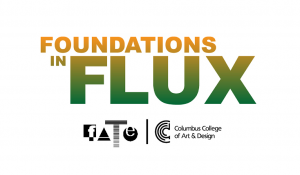 Register for FATE’s 17th Biennial Conference, “Foundations in Flux,” will be hosted by Columbus College of Art & Design in Columbus, Ohio on April 4th-6th, 2019. Registration includes Breakfast & Lunch for each day of the conference. https://www.foundations-art.org/conference
Register for FATE’s 17th Biennial Conference, “Foundations in Flux,” will be hosted by Columbus College of Art & Design in Columbus, Ohio on April 4th-6th, 2019. Registration includes Breakfast & Lunch for each day of the conference. https://www.foundations-art.org/conference
Foundations in Flux will host various workshops led by FATE members during the conference on Friday April 5th. Workshop sessions have limited numbers of seats & participants must register in advance, there are NO ADDITIONAL FEES to participate in these workshops. All workshops will be held on the campus of CCAD. All seats are on a first-come basis and some workshops will require materials to be supplied by the attendee. Please read all workshop details below before making your selection(s). For more info and to register: https://docs.google.com/forms/d/e/1FAIpQLSdKwlrpTANzrgZICqL0LzyvG8Qwc3x_yw4ABLo2z7zu3dvDUw/viewform
Positive Space is FATE’s bi-monthly podcast providing opportunities for those passionate about art foundations to discuss and promote excellence in the development and teaching of college level foundations in art & design studio and history classes. To check out the latest episode, featuring FATE President, Valerie Hanks, discussing her recent workshop about discomfort and empathy in the classroom, visit: https://www.foundations-art.org/positive-space
If you have podcast ideas, contact us! Positive Space has a phone number: 904-990-FATE. Give us a call & record a message today!
American Institute for Conservation
Please join us at the 2019 AIC Annual Meeting being held at the Mohegan Sun, located in Uncasville, CT, May 13-17. With over 1,400 attendees, the AIC Annual Meeting is the largest international conservation and collection care conference held in North America. Visit our Annual Meeting webpages to see the online schedule and learn about the nearly 200 talks and events. Some highlights of the 2019 meeting include a new Opening General Session featuring TED-style talks, hundreds of specialty talks, and engaging lunch programing.
The Mohegan Sun, centrally located in New England, offers a 4-star quality hotel experience at a low nightly rate of $139 for AIC Annual Meeting attendees. We also have a block of student rooms starting at $98 per night. Getting to the Mohegan Sun is easy. Those located between Washington DC and Boston can drive or take Amtrak. AIC is also running direct buses from New York City and Boston. For more information on our host hotel, view the accommodations pages.
The proximity to major East coast cites allows AIC to offer workshop and tours all over New England during our pre-session, May 13-14. Visit the online schedule to view our pre-session offerings.
We welcome you to register now for the 2019 AIC Annual Meeting!
Visual Resources Association (VRA)
Tools and Trends in Visual Resources
The Visual Resources Association is using a scheduled business meeting at the annual College Art Association conference to share information about some of the tools that curators are using to enhance and manage digital image collections and discuss new trends in the field of visual resources and art librarianship.
Three speakers will be presenting their work in these areas:
Cataloging at Artstor: A New Look at Tried and True (and some AI) Strategies
Lisa Gavell, Senior Manager of Image Content at Artstor
Maximizing Metadata: VRA Embedded Metadata Tools
Marcia Focht, Curator of Visual Resources at Binghamton University
Images as Research Data
Jasmine Burns, Visual Resources Metadata Librarian at Cornell University and Chair of the Upstate New York Chapter of VRA.
Please join us for provocative presentations with time for questions and discussion on Friday, February 15th, 2019, in the Morgan Suite at the New York Hilton Midtown, from 12:30 to 1:30 pm.
This event is free and open to the public, so you do not need to be a CAA member or to register for the conference to attend this business meeting. If you wish to attend regular sessions, the book and trade fair, or other CAA conference activities, you must register. Advance registration for the full conference ends on Jan 30th, 2019 (only 3 days left), but single timeslot and day passes may be purchased onsite (not available in advance).
For questions, please contact:
Maureen Burns, IMAGinED Consulting & VRA CAA Affiliate Representative
moaburns@gmail.com or 310-489-3792
SECAC
The Call for Papers for SECAC 2019 in Chattanooga is open at https://secac.secure-platform.com/a/solicitations/home/5.
SECAC 2018: 74th ANNUAL CONFERENCE
In October, SECAC met for the 74th time in Birmingham, Alabama, hosted by the University of Alabama at Birmingham. Over 120 sessions were held, and 561 members representing 284 institutions attended. In its eighth year, participation in the SECAC mentoring program remained high with 40 members meeting as mentors and mentees.
Highlights of the conference included the SECAC 2018 Annual Juried Exhibition at UAB’s Abroms-Engel Institute for Visual Arts and a keynote address at the Birmingham Museum of Andrew Freear of the Rural Studio.
At the annual business meeting SECAC President Sandra Reed of Marshall University introduced new members of the Board of Directors: Alabama, Wendy DesChene, Auburn University; Florida, Jeff Schwartz, Ringling College of Art and Design; Kentucky, Eileen Yanoviak, Carnegie Center for Art and History; Louisiana, Jill Chancey, Nicholls State Univeristy (continuing); North Carolina, Kathryn Shields, Guilford College; and At Large #3 Claire Kovacs, Augustana College.
SECAC 2019 will be hosted by the University of Tennessee at Chattanooga, October 16-19. Calls for presentations, juried exhibition entries, and award applications will be published on the SECAC submissions site at https://secac.secure-platform.com/a in early 2018.
AWARDS PRESENTED AT SECAC 2018
The SECAC Artist’s Fellowship, a $5,000 prize, was awarded to photographer Karen Graffeo, Professor of Art at the University of Montevallo, author and photojournalist Julio Larramendi, photographer and editor at Ediciones Polymita in Cuba, photographer Sonja Rieger, Professor of Photography at the University of Alabama at Birmingham, and Alabama-based photographer and filmmaker Carolyn Sherer. Their proposed exhibition, My Other Body: Trans-Culture, Transgender Cuba/Alabama, will be on view at SECAC 2019 in Chattanooga, Tennessee.
Andrew Wasserman, Visiting Assistant Professor at the University of North Carolina at Greensboro, won the 2018 Levin Award for his project Bang! We’re All Dead! The Places of Nuclear Fear in 1980s America.
The 2018 SECAC Award for Excellence in Teaching was presented to Wendy DesChene, Professor of Art at Auburn University.
The 2018 SECAC Award for Excellence in Scholarly Research and Publication was awarded to Olga U. Herrera, Director of the Washington Office of the Inter-University Program for Latino Research (IUPLR) headquartered at the University of Houston, for American Interventions and Modern Art in South America, University Press of Florida, 2017.
The 2018 SECAC Award for Outstanding Exhibition and Catalog of Historical Materials was presented to Keri Watson for In the Eyes of the Hungry: Florida’s Changing Landscape, exhibited at the UCF Art Gallery and the Terrence Gallery at the Orlando City Hall in 2017.
The 2018 SECAC Award for Outstanding Exhibition and Catalog of Contemporary Materials was given to Vesna Pavlović, Associate Professor of Art at Vanderbilt University, for the exhibition Vesna Pavlović’s Lost Art and its catalog edited by Pavlović and Morna O’Neill.
Thirty-four graduate students received Gulnar Bosch Travel Awards: Virginia Badgett, University of California, Santa Barbara; Gráinne Coughlan, Dublin Institute of Technology; Stephanie Crawford, Rutgers University; Erin Davenport, University of North Carolina at Chapel Hill; Julia Detchon, University of Texas; Parissa Farmoudehyamcheh, Georgia Southern University; Dilmar Mauricio Gamero Santos, Tyler School of Art, Temple University; Elyse D. Gerstenecker, University of Virginia; Caroline Gillaspie, The Graduate Center, CUNY; Amy Catherine Hulshoff, University of New Mexico; Manami Ishimura, Texas A&M Corpus Christi; Ally Johnson, University of Illinois at Urbana-Champaign; Tacie Jones, Virginia Tech University; Holly Kelly, University of Tennessee, Knoxville; Sharon Khalifa-Gueta, Ben Gurion University of the Negev; Patricia Lagarde, Tulane University; Mia Laufer, Washington University in St. Louis; Kimiko Matsumura, Rutgers University; Mary Mazurek, IDSVA ; Reed O’Mara, Case Western Reserve University; Ellie Perendy, Baruch College; Kathleen Pierce, Rutgers University; Catherine Popovici, The University of Texas at Austin; Ali Printz, Tyler School of Art, Temple University; Lily F. Scott, Temple University; Roberta Serra, Université Paul Valéry; Lauren Elizabeth Shea, University of Illinois at Urbana-Champaign; Jeff Siemers, IDSVA; Lauryn Smith, Case Western Reserve University; Tracy Spencer Stonestreet, Virginia Commonwealth University; Sarah Tietje-Mietz, Syracuse University; Vanessa S. Troiano, The Graduate Center, CUNY; Angela Whitlock, IDSVA; and Hayley Woodward, Tulane University.
Juror Peter Baldaia, Director of Curatorial Affairs at the Huntsville Museum of Art, selected Over There To Here (Gatlinburg), 2018, by Stacy Isenberger, University of Idaho, as Best in Show at the SECAC 2018 Annual Juried Exhibition. He also recognized five participants with Juror Awards: Joshua Brinlee, University of Mississippi, for Self-Portrait as Provider, 2017; Lily Kuonen, Jacksonville University, for Hewn, 2017;
Jessica Mongeon, Arkansas Tech University, for Drunken Trees: Permafrost Melts, Leaving Uneven Ground, 2017; Duane Paxson, Independent Artist, for Denying Dendera, 2018; and John Douglas Powers, University of Tennessee–Knoxville, for Terra Nuova, 2017.
EAHN
The EAHN wishes to draw attention to the three calls for proposals described below, all organized by EAHN’s Urban Representations Work Group, for the conference “The Global City: Urban Condition as a Pervasive Phenomenon” organized by the A.I.S.U. (Associazione Italiana di Storia Urbana) in Bologna, 11-14 September 2019.
The deadline for submitting abstracts has been extended to February 10th.
Abstracts indicating name, affiliation, email address, brief cv, and a description of the proposed topic of no more than 2000 characters should be sent both to the chairs of the session and to the conference organizers (congresso@storiaurbana.org) using the form found on the conference website http://www.storiaurbana.org/index.php/en/component/content/article/9-congressi/1131-bologna-2019-call-for-paper-uk
Session 3-5 “The Photo-book and the City”
The term ‘photo-book’ was coined in the 1920s by László Moholy-Nagy and went on to define a popular genre within 20th-century visual culture. While this genre emerged within the ‘New Vision’ of the inter-war period, it has a broader history that goes beyond the modernist avant-gardes. What role did this unique form of publication play within the history of urban representation? The aim of the session is to focus on the photo-book as an instrument for reading, analysing, and interpreting cities through a curated sequence of images. There is a long cultural and artistic history of these illustrated books, spanning from the late-19th to the early-21st century, which calls for comparative investigation. A tentative list should include celebrated examples, ranging from Alvin Langdon Coburn’s works inspired by Japanese view-making cultures (London 1909; Edinburgh 1909; New York 1910) to seminal books by Brassaï (Paris de nuit 1932), Berenice Abbott (Changing New York 1939), Horacio Coppola (Buenos Aires 1936) and William Klein (New York 1956; Rome 1959), but we are equally interested in less-known publications. Attention will also be given to by the work of photographers trained as architects who used the camera to capture specific qualities of urban space, such as Norman Carver (Italian Hilltowns 1979) and Gabriele Basilico, whose observations of cities around the world (Milan; Beirut; Berlin; Moscow; Istanbul) were the subject of carefully curated volumes. There is a history here that awaits to be written; one that is made all the more significant by the recent use of photo-books to preserve the narrative of urban campaigns stretching over decades (e.g., works by Martin Parr and Garry Badger published by Phaidon). Gradually, as with other photographic trends, this type of representation has been taken up by contemporary artists, historians, architects and urban designers for a variety of urban explorations. We encourage participants to propose case-studies as well as reflective papers focusing on photo-books across the history of photography – from its origins to the latest digital developments. Contributions that address the role of various figures involved in the production, circulation, and reception of these publications (e.g., photographers; editors; publishers; etc) are also welcome.
Chairs: Davide Deriu d.deriu@westminster.ac.uk; Angelo Maggi amaggi@iuav.it
Session 6-4 “Reading the City’s Histories Through Visual Documents”
Every city contains multitudes, presenting a collective artifact made up of innumerable places and lived narratives. Most present-day cities also overlay multitudes, covering or transforming earlier iterations of themselves. Our knowledge of those older layers, of urban landscapes since recast, quickly surrenders to the mortality of personal memory. We then come to depend heavily on the persistence of physical artifacts that capture fragments of the past city, whether through survivals and traces in the present-day built landscape or through records — textual, visual, and sometimes even three dimensional — of those largely supplanted deeper layers of the urban palimpsest.
But the city is a big and complicated artifact, and every such representation must be a purposeful distillation, begging questions of the part and the whole, and of choice. Each favors some kinds of information over others, and all demand a considered examination of the lens adopted by their creators, retrospectively framing the visual document in the context of agency, motives, models, and expected function. At the same time, even as we are conscious of such filtering frames, we want to ask what they tell us about their subject, as they offer posterity some of our best evidence of these places in time. They allow us to better see and read the built landscapes they portray as patterns of forms, as socio-economic artifacts, as settings of living and working and gathering, of entrepreneurial ambitions and communal organization, across the globe and through history.
For this session, we especially invite contributions that look to and interrogate visual documents that capture lost aspects of the city of both distant and recent history at a range of scales — from detailed surveys of common building forms to purposefully selected sets of views, from closely transcribed plans and streetscapes of whole blocks and neighborhoods to maps of larger spatial networks and depictions of a city as a whole — that offer us insights on both that city and our own vantage point, in terms of our intentions and responses, in our looking at and to it.
Contact person: Anat Falbel anatfalbel@uol.com.br
Chairs: The EAHN Interest Group “Urban Representations” (organized by group members Jeffrey Cohen, Anat Falbel, Min Kyung Lee, Nancy Stieber)
Session 6-6 “Stories We Tell: Narratives of Urban Space”
Architectural sites as tourist attractions challenge the histories and memories of the urban collective. The city beckons the potential visitor (both tourist and local alike) through the aestheticization and cultural branding that serve, particularly through pervasive mediatizations, to narrativize urban space that may be in contrast to, or stacked amongst, stories of place. This session will engage an assortment of pressing questions about the relationship of architecture to tourism and memory specifically to position concepts of demolition, preservation, heritagization and new construction within urban (geopolitically-shaped) sites, for no site is detached from place; no touristic visit can effectively be accomplished without considering — in some measure — the story of a place and the memories it holds for all those who dwell or pass through it. No guidebook is disentangled from interpretive memories and stories that contribute to how tourists come to learn about a site. Questions such as whose memories become the stories of a tourist’s encounter with a place, or how do we consider the terms heritage or heritagization within the context of placemaking and memory stories, will be discussed. Finally, what constitutes the memory or (competing) memories of a place in order for it to be preserved (and subsequently branded for a tourist economy)?
Chair: Shelley Hornstein shelleyh@yorku.ca
ATSAH
NEWS FROM ASSOCIATION FOR TEXTUAL SCHOLARSHIP IN ART HISTORY
AWARDS for Students and Scholars
In commemoration of our 30th anniversary, ATSAH plans to offer two awards: one prize for the best article by an emerging scholar (no higher than Associate level). The topic may range from classical to Pre-Raphaelite art, reflecting the aims of ATSAH. The second is a small travel grant for junior scholar presenting a paper an ATSAH session.
The board of ATSAH selects these awards.
For further data, contact:
Liana Cheney, PhD, President of ATSAH
Liana_Cheney@uml.edu
ATSAH Session at CAA 2019
Member’s publications
Special Edition in Iconocrazia Vol 13 – 2018
Art, Astronomy, Politics, and Religion
Liana De Girolami Cheney
Giorgio Vasari’s Moral Virtues in the Oratory of the Compagnia del Gesù at Cortona: Physical and Metaphysical Power
Andrzej Piotrowski
Politics, Architecture, and the Historiography of Denial in Poland
Brian D. Steele
Force Constrained: Hercules in Sixteenth-Century Venice
Charles Burroughs
The Graces and Political Order in the Renaissance Imaginary
Damiano Acciarino
Iconologia del Fato nel Rinascimento
Giangiacomo Gandolfi
Cosimo de’ Medici, Paolo Toscanelli e il Cielo dei Magi: una nuova ipotesi per gli Emisferi Celesti Fiorentini
Jennifer Bates Ehlert
Questioning the Oracle: Jacek Malczewski’s Pythia series and World War One
Lynette M.F. Bosch
Interpreting and Dating Michelangelo’s Crucified Christ for Vittoria Colonna: Fra Ambrogio Catarino Politi And St. Paul
Sarah J. Lippert
Egypt and Napoléon Displaced
Cassandra Sciortino
Armand Point’s St.Cecilia & the Painters of the Soul: Bridging Art & Life in Fin de Siècle France
Liana De Girolami Cheney
Edward Burne-Jones’s The Mirror of Venus: Physical and Intangible Female Beauty in Journal of Literature and Art Studies 9, no. 1 (January 2019):1-28.
International Association for Word and Image Studies (IAWIS)
New Publications
A selection of articles from the IAWIS Dundee conference (2014) has now been published in book form. The volume is entitled:
Art and Science in Word and Image: Exploration and Discovery, Brill/Rodopi (Word and Image Interactions, volume 9), edited by Keith Williams, Sophie Aymes, Jan Baetens and Chris Murray
It is available at https://brill.com/view/title/36202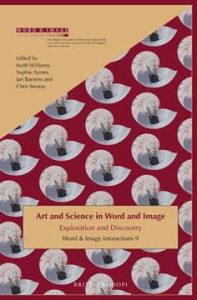
- “Photographie et théâtre”, Revue internationale de photolittérature, ed. Marianne Drugeon, Christine Kiehl, Jean-Pierre Montier et Laurence Petit, n° 2, 2018. https://www.fabula.org/actualites/revue-internationale-de-photolitterature_88524.php
- Converging Lines: Needlework in English Literature and Visual Arts edited by Rachel Dickinson & Laurence Roussillon-Constanty, Revue E-Rea, n° 16.1/2018: https://journals.openedition.org/erea/6451
- Next IAWIS Triennial Conference
CALL FOR SESSIONS Water and Sea in Word and Image, University of Luxembourg, July 5th – 10th, 2020
In an era in which water scarcity is threatening us all and the mainland is affected even in the depths of its epicenter by what is happening on its shores, it seems of great importance to propose a subject both acutely topical and strongly tied to the collective imagination. In Alessandro Baricco’s novel Ocean sea (1993), the fictional character Plasson paints the sea with seawater. This emblematic scene sums up our topic to some extent: water is difficult to grasp and yet concerns us more and more. Shapeless, still waiting to be defined, it even resists any effort of conceptualization. Putting water and the sea into words and into images is not obvious, represents a real discursive and plastic challenge and is therefore particularly likely to call into question the relationship between text and image. Due to its rhythm “without measure” (Deleuze & Guattari, 1980), water as an element transcends Lessing’s dichotomy between arts of time and arts of space (see Louvel, 2002). The water’s unspeakable nature does not coincide with its invisible essence. Yet, literary and plastic narratives constitute an actual semiosphere with, at its borders, an area where the semiotic links are violated (Lotman, 1966), the realm of the unstable, the arbitrary, the unaccountable.
Located at the heart of the European continent – however tightly interconnected with its periphery –, cradle of the siren Melusine, territory boasting its natural springs and its balneology, Luxembourg seems to be the appropriate place to host a world congress on this subject.
Abstracts for sessions should be a maximum of 300 words.
N.B.: All conference participants must be members of IAWIS/AIERTI (http://iawis.org/) and in order with their membership fee before the conference.
The deadline for SESSION PROPOSALS is February 28th, 2019. Submissions are to be dropped on our website: https://waterandsea2020.uni.lu
The selection committee will contact you before March 30th, 2019 about the outcome of your application.
POTENTIAL CONFERENCE SESSION THEMES
N.B.: The sessions consist of one or maximum two panels of 1h30 each (three papers). The panels will offer a tribune to experienced researchers in Word and Image Studies and/or young scholars (doctoral students/postdocs) whose proposals the chairs of the elected sessions will gather and select. The word and image interaction should be formulated in the title of the session. Please indicate if your session fits with one or several of the potential themes listed below (e.g.: 1, 7, 12).
- Water, a natural element (its virtues and dangers) and an esthetic challenge
- Water as energy in science and arts
- The biblical or mythical imaginary of water and sea
- Aquatic and maritime myths, rites and marine, fluvial or lacustrine folklore
- Melusine, nymphs, naiads and other sirens
- The seaside or still water in painting and literature
- Balneology, its history and actuality
- Harbours in texts and images
- Insular or peninsular cultures
- Touristic promotion of natural heritage (seaside, lakes, rivers)
- Aqueducts, thermal baths and dams in the Greater Region
- The Mediterranean Sea, the Atlantic and the Pacific Ocean (shores, fauna, cultural and market routes, migration)
- Graphic novel, comics or cartoons on sea, water or migration
- Water and sea in film, video or in digital artefacts
- The future of water in arts and media
- Water scarcity, drought and sustainable issues in word and image
- The sea as epistemological metaphor (shipwreck, raft, wave, hurricane, liquidity, archipelago, foam)
- Scientific or imaginary cartography
- Other related topics
AHNCA
The Association of Historians of Nineteenth-Century Art (AHNCA) is pleased to announce that the Sixteenth Annual Graduate Student Symposium in the History of Nineteenth-Century Art, co-sponsored by AHNCA and the Dahesh Museum of Art, will be held on Sunday, March 24, 2019 (10:00 am – 5:00 pm), at the Dahesh Museum of Art, 145 Sixth Ave., New York, NY. The Mervat Zahid Cultural Foundation has generously provided the Dahesh Museum of Art Prize of $1,000 for the best paper. Information about the speakers and brief abstracts of their papers will be available online at http://ahnca.org/index.php/symposia after February 6, 2019.
Historians of German, Scandinavian, and Central European Art and Architecture (HGSCEA)
The Board recently awarded travel stipends to two members of HGSCEA, Sara Blaylock and Lauren Hanson, to help defray the costs of their participation in CAA’s annual conference. The Board also juried this year’s HGSCEA Emerging Scholars Prize competition, the winner of which will be announced at the reception and dinner in New York. As always, the dinner, which will take place on Thursday, February 14, from 7 to 9 p.m., is free to current members. For further information, contact a member of the Board.
HGSCEA’s sponsored session at the annual CAA conference, “Women Artists in Germany, Scandinavia, and Central Europe, 1880-1960,” is being chaired by Kerry Greaves on Saturday, February 16, from 10:30 a.m. to 12:00 p.m.. Emil Leth Meilvang, Nora Butkovich, Lauren Hanson, and Lynette Roth will read papers on Rita Kernn-Larsen, women in the Young Yiddish Group, Mary Bauermeister, and Anneliese Hager. For more information, go to the HGSCEA website (http://hgscea.org/ ) and the conference website (https://caa.confex.com/caa/2019/meetingapp.cgi/Session/1607)
The annual business meeting is scheduled for Friday, February 15. It will take place in the Harlem Room on the 4th Floor of the New York Hilton Midtown from 12:30-1:30 p.m. Members are welcome to attend.
The Midwest Art History Society
The Midwest Art History Society (MAHS) would like to call your attention to its recent e-publication Monumental Troubles: Rethinking What Monuments Mean Today, searchable by its title in WorldCat. The publication records selected papers presented at the 2018 MAHS Annual Conference held in Indianapolis. The essays in this e-volume contribute to contemporary conversations about public monuments, broadly defined as commemorative objects, images, and spaces, and the responses to them, including the calls to remove, relocate, or destroy them. Contributors consider these “monumental troubles” from multiple historical, geographic and theoretical perspectives, suggesting a generative rethinking about why they were made and how their meaning changed over time.” The original conference sessions were organized by Erika Doss, University of Notre Dame and the publication effort was guided to its successful conclusion by Cheryl Snay of the Snite Museum of Art.
And please consider attending the 2019 MAHS Annual Conference to be held in Cincinnati, March 21-23. The Cincinnati Art Museum & the Taft Museum of Art are conference hosts, keynote speaker is Hollis Clayson. Conference registration includes special tours, receptions, and more. Reduced fees for early registration end on March 1. Book a room in the Hilton Netherland Plaza at a discounted rate before Feb 27. Click the link below to register online & book a room. https://www.mahsonline.org/conference/register
HNA
What: CAA session: The Female Impact: Women and the Art Market in the Early Modern Era
When: Thursday, February 14, 2019, 2:00 PM – 3:30 PM
Where: New York Hilton Midtown – 2nd Floor – Morgan Suite
CHAIRS: Judith Noorman and Frans Grijzenhout
What: HNA Reception
When: Friday, February 15, 2019, 5:30-7 pm
Where: Syracuse University Lubin House, 11 East 61st Street, New York, NY
Please RSVP to Amy Golahny, Golahny@Lycoming.edu
EPCAF
The European Postwar and Contemporary Art Forum has changed its governance structure and will now be headed by a team of co-chairs. Lily Woodruff has transitioned from her previous role as president, and is now joined by Raffaele Bedarida. Raffaele is an art historian and curator specializing in twentieth-century Italian art and politics. In particular, his research has focused on cultural diplomacy, migration, and cultural exchange between Italy and the United States. He is an Assistant Professor of Art History at Cooper Union, New York. Bedarida is the author of two monographs in Italian, Bepi Romagnoni: Il Nuovo Racconto (Milan: Silvana Editoriale, 2005) and Corrado Cagli: La pittura, l’esilio, L’America (Rome: Donzelli, 2018; English edition upcoming), and numerous articles for academic journals (International Yearbook of Futurism Studies, Oxford Art Journal, Tate Modern’s In Focus) and exhibition catalogues (MART, Rovereto; CIMA, New York; Fundacion Juan March, Madrid; Frederick Kiesler Foundation, Vienna). He holds a PhD from the Art History Department of the CUNY Graduate Center, as well as MA and BA degrees in Art History from the Università degli Studi di Siena, Italy. Bedarida is currently working on the manuscript for his book: ‘Like a Giant Screen:’ The Promotion of Contemporary Italian Art in the United States, 1935–1969.
Public Art Dialogue (PAD)
Public Art Dialogue (PAD) will present its 2019 PAD Award for achievement in the field of public art to art collective fierce pussy during next week’s conference. Please see the announcement here: https://publicartdialogue.org/news/2019-01-09/2019-pad-award-fierce-pussy
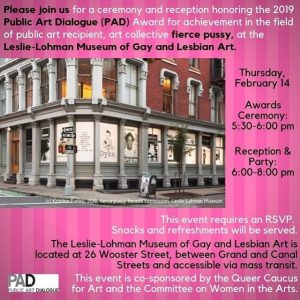
Comprehensive Appraisal Studies Program (CASP)
Now Accepting CASP Applications!
The Appraisal Institute of America, the educational foundation of the Appraisers Association of America is now accepting applications for our Comprehensive Appraisal Studies Program (CASP) for both the Summer 2019 and Fall 2019/Spring 2020 Semester.
Enroll in CASP to learn to appraise the fine and decorative arts. Completing CASP will provide you with a certificate in Appraisal Studies from the Appraisal Institute of America.
For more information and to apply, please visit our website at www.appraisersassociation.org/CASP.
Society of Architectural Historians
The Society of Architectural Historians has been awarded a two-year, $508,000 grant from The Andrew W. Mellon Foundation to study the status of the field of architectural history in higher education. The grant provides support for a data-gathering initiative that will gauge the health of architectural, urban and landscape history as fields of study, as well as degree programs and curricula across the higher education landscape. SAH plans to hire a post-doctoral researcher to design and manage the study to determine where, and in what ways, these fields of study are expanding, receding, changing, or holding steady and to consider the structural or cultural factors behind such trends. SAH also will hire a Project Coordinator to assist with the project. Visit the SAH Career Center for full job descriptions.
SAH has named architect Aymar Mariño-Maza and architectural historian Zachary J. Violette as the recipients of the 2018 H. Allen Brooks Travelling Fellowship. The fellowship allows an emerging scholar to travel the world to experience architecture and landscapes firsthand. SAH awarded Mariño-Maza a one-year fellowship and Violette a short-term fellowship for three months of travel. They will begin their fellowship travels in March 2019 and will document their field studies through monthly updates on the SAH Blog.
SAH invites nominations and self-nominations for the next Editor of the Journal of the Society of Architectural Historians. JSAH is a quarterly, blind-peer reviewed international journal devoted to all aspects of the history of the global built environment and spatial practice, including architecture, landscape architecture, urbanism, and city planning. Published since 1941, JSAH has defined the field of architectural history, and is a pioneer in digital publication. Nominations due by April 30, 2019.
Association of Print Scholars
The Association of Print Scholars is pleased to host its affiliated society panel at the College Art Association conference on Friday, February 15, 2019 in New York.
Chaired by Christina Michelon (University of Minnesota, Twin Cities), Coloring Print examines global printmaking traditions that advance our understanding of the role of the medium in the social construction of race. The papers chosen include “Red Ink: Ethnographic Prints and the Colonization of Dakota Homelands” by Annika Johnson (University of Pittsburgh); “Sites of Contest and Commemoration: The Printed Life of Richard Allen, America’s Early Race Leader” by Melanee C. Harvey (Howard University); “A Franco-Indian Album: Firmin Didot’s Indian Paintings and Le Costume Historique’s Chromolithography (1888)” by Holly Shaffer (Brown University); and “The White Native Body in Asia: Woodcut Engraving and the Creation of Ainu Stereotypes” by Christina M. Spiker (St. Catherine University).
Aaron M. Hyman and Dana Leibsohn have been awarded the Association of Print Scholars 2018 Publication Grant to support the forthcoming publication related to their project “Washing the Archive: Indigenous Knowledge, European Prints, and Colonial Histories of Latin America.”
The co-authored project focuses on the circulation of prints in colonial Latin America, highlighting unpublished documents and the methodological provocations indigenous practices can offer traditional early modern print histories. The funding supplied by the grant will provide both authors the opportunity to travel to the Library of Congress and to the University of Virginia to complete their study of indigenous uses of European prints in Spanish America, especially practices of re-use, circulation, and loss under colonial conditions. The $2,000 award is funded by the Association of Print Scholars and through the generosity of C.G. Boerner and Harris Schrank. We thank both print dealers for their support of APS and its mission.
SOCIETY OF HISTORIANS OF EASTERN EUROPEAN, EURASIAN, AND RUSSIAN ART AND ARCHITECTURE (SHERA)
The following members were elected to the SHERA Board: Kristin Romberg (Vice President/President Elect); Corina Apostol (Web News Editor); and, Anna P. Sokolina (SHERA-SAH Liaison). Karen Kettering now serves as President, Alice Isabella Sullivan as Secretary-Treasurer, and Yelena Kalinsky as Listserv Administrator.
Aglaya K. Glebova (UC-Irvine) has been awarded the SHERA Emerging Scholar Prize for her essay “Elements of Photography: Avant-garde Aesthetics and the Reforging of Nature” (Representations 142, Spring 2018). Ekaterina Heath (University of Sydney) was selected as the recipient of the SHERA Travel Grant for CAA 2019 to will deliver her paper entitled “Picturing the Cathay in Russia: Political use of Chinoiserie interiors under Empress Elisabeth Petrovna and Emperor Peter III.”
The generous anonymous donor who has funded the SHERA Travel Grant has increased their support to allow for more grants and to enlarge the pool of eligible applicants. The award was initially given out once per year, for travel to CAA and ASEEES conferences in alternate years and was limited to graduate students. Going forward, the Travel Grant will be awarded twice per year for travel to both CAA and ASEEES. Additionally, independent scholars who receive no institutional support are now eligible to apply. US-based scholars will receive $1,000 and scholars traveling from outside the US will receive $1,500. Calls for applications are published on H-SHERA and on CAA Opportunities.
SHERA’s Board would like to continue developing online resources for scholars and teachers in our field using the H-SHERA platform, including book reviews, sample syllabi, up-to-date contact information for obtaining image permissions, conference reports, information about graduate programs, or other resources. If you have ideas or would like to volunteer to help with this effort, please write to the H-SHERA editors at editorial-shera@mail.h-net.org.
Association of Art Museum Curators (AAMC) & AAMC Foundation
Association of Art Museum Curators (AAMC) & AAMC Foundation is currently accepting applications for its Conference Travel Fellowships for curators to attend its Annual Conference and Meeting. Since 2010 alone, over 200 individual Curatorial Travel Fellowships have been awarded.
This year we are proud to offer two opportunities:
- Conference Travel Fellowship for Junior Curators. Open to junior curators with less than ten years of experience. Funding generously provided by the Samuel H. Kress Foundation.
- Art Fund / AAMC Conference Travel Fellowship. Open to UK curators to travel, network and develop relationships with their international peers. These Fellowships are a collaboration between Art Fund and AAMC Foundation.
All applicants must commit to participating in the full Conference program (May 4-7, 2019 in New York City) at the time of application, including the all deadlines (non-negotiable), timelines, and travel. A stipend is granted as part of this Program to subsidize the travel requirements. Multiple curators from one museum are eligible, though individuals may only submit one application per year.
Each Fellowship has a separate application, and members may apply to one Fellowship only. Applications for both of these AAMC Foundation Conference Travel Fellowships are due via our online application portal by 12pm ET on Tuesday, February 12, 2019.
To view the full program benefits, eligibility, and the link to the applications, please visit:
https://www.artcurators.org/page/TravelGrants
—-
Association of Art Museum Curators (AAMC) Foundation is pleased to announce Digital & Outward Engagement, the next installment in its regional In-Conversation series. Launched in 2016, AAMC Foundation’s In-Conversation series brings together local communities and expands networks.
Slated for Tuesday, February 26 at the Philadelphia Museum of Art, In-Conversation: Digital & Outward Engagement features six perspectives on building bridges between museums and their audiences through the use of ever-evolving technologies and digital tools. Moving past social media and traditional websites, this event brings together Philadelphia’s leading voices to dig deeper into the ways in which technology can help advance dialogues with visitors, donors, colleagues, and the larger global community. They will touch on the current efforts and platforms in the digital sector, and consider ways in which they could be used to help better connect with audiences. With a look at the topic from varying perspectives, we’ll also have the opportunity to reflect on ways to collaborate as well.
Moderated by Christopher D.M. Atkins, Ph.D, Agnes & Jack Mulroney Associate Curator of European Painting & Sculpture and Manager, Curatorial Digital Programs & Initiatives, Philadelphia Museum of Art, this program features Aaron Miller, Senior Producer, Digital Media, The Franklin Institute; William Noel, Associate University Librarian & Director, Kislak Center for Special Collections, Rare Books and Manuscripts Director, Schoenberg Institute for Manuscript Studies, Penn Libraries; Amy Sadao, Daniel W. Dietrich, II Director, Institute of Contemporary Art, University of Pennsylvania; Ariel Schwartz, Kathy and Ted Fernberger Associate Director of Interactive Technologies, Philadelphia Museum of Art; and Neville Vakharia, Program Director, Arts Administration Campus Program and Associate Professor and Research Director, Drexel University, Westphal College of Media Arts & Design.
This In-Conversation will be hosted at the Lecture Auditorium at the Philadelphia Museum of Art’s Perelman Building on Tuesday, February 26, 2019 from 6:30pm – 8:00pm, followed by a short reception from 8:00pm – 8:30pm. Space is limited so pre-registration is required. Click here to reserve your seat!
ACASA – Arts Council of the African Studies Association
- ACASA welcomes new board members:
Peri Klemm, President
Peju Layiwola, President Elect/VP
Shannen Hill, Past President
Raphael Chikukwa, Secretary
Rachel Kabukala, Treasurer
Fiona Siegenthaler, Newsletter Editor
Erica Jones, Assistant Website Editor
Cynthia Becker, ASA Liaison
Olubukola Gbadegesin, CAA Liaison
El Hadji Malick Ndiaye
In office since 2017:
Nadine Siegert, Website Editor & ECAS Liaison
Brenda Schmahmann, Facebook Manager
Anitra Nettleton, ASA Task Force for the Protection of Academic Freedom
Shadreck Chirikure
We thank our outgoing board members Silvia Forni, Jordan Fenton, Yaëlle Biro, Cécile Fromont, Liese Van der Watt, Deborah Stokes, Leslie Rabine and Cory Grundlach for their great work and wish them all the best for the future!
- Africa, Technology, and Visual Cultures: ACASA sponsored panel at the 107th CAA Annual Conference, NYC, February 14, 2019, 8.30-10.00am
Join us at the ACASA sponsored panel Africa, Technology, and Visual Cultures chaired by Amanda Kay Gilvin with paper contributions by Suzanne Preston Blier, Stephen Adéyemí Folárànmí, Kate Ellen Cowcher and Fiona Siegenthaler.
https://caa.confex.com/caa/
- Behind-the-Scenes at the Brooklyn Museum during 107th CAA Annual Conference, NYC February 15, 2019, 10.15am- 12.00pm
Join Kristen Windmuller-Luna, Sills Family Consulting Curator of African Arts, for a behind-the-scenes tour of the new exhibition One: Egúngún. Featuring a Yoruba (Nigerian) masquerade costume composed of over 300 African, Asian, and European textiles, the exhibition uses new research and multiple perspectives to emphasize the global connections and contemporary contexts of African masquerades. Information about the exhibition: http://brooklynmuseum.org
Limited space: RSVP at bkm.nyc/caa2019acasa
H-AfrArts is looking for Editors and Advisory Board Members to join the team and share duties and responsabilities on a voluntary basis.
The Editor role involves moderating discussion posts and general CfPs. There is also an exciting opportunity (optional) to develop new content based on your interest and initiative, such as developing Teaching and Research Resources, Conference Reports, and Cross-Network Projects. A minimum of one year committment is required for this role. For a full description of the duties of Editors please consult: https://networks.h-net.org/node/905/pages/80264/becoming-editor
The Advisory Board Members assist with the general development and welfare of the Network and advise Editors in cases in which there are disputes with the members (such as when a post is rejected and a subscriber appeals). A minimum of two years commitment is required for this role. To find out more, please visit: https://networks.h-net.org/h-net-advisory-board-members
About the Network:
H-AfrArts is an international network jointly sponsored by H-Net (Humanities Online) and ACASA (Arts Council of the African Studies Association-USA) to provide a forum for the discussion and exploration of African art and expressive culture. There are a number of reasons and benefits for joining H-AfrArts Network, these include:
Collaboration: Volunteering with an H-Net Network can be an excellent opportunity to work within a multi-disciplinary and committed editorial team.
Engagement: H-AfrArts Network provides an excellent opportunity to engage with, support, and develop your field of study.
Best Practice: H-Net is committed to supporting editorial best practices. You will receive comprehensive H-Commons online training to moderate and safeguard the content of the network.
Support: H-Net has a Home Office staffed by trained historians, an online training program, a Help Desk, and a separate space where its Editors can discuss questions and concerns relating to academic best practices and project development.
Durability: H-Net is committed to the long-term digital preservation of its academic content.
Visibility: H-Net’s content is available online for free and uses an email notification system to deliver academic content directly to subscribers.
How to Apply:
Applicants must demonstrate expertise in African Arts and have regular and reliable access to email.
If you are interested, please send your CV and a covering letter by email to: editorial-afrarts@mail.h-net.msu.edu
For any questions or help please contact: Helena Cantone – Advisory Board yenacanta@gmail.com
Applications will be accepted until the positions are filled.
This is a voluntary position: The H-Net is a non-profit organization run by academics and built around a committed community of volunteers.
- Call for Applications: AFRICAN CRITICAL INQUIRY PROGRAMME: IVAN KARP DOCTORAL RESEARCH AWARDS FOR AFRICAN STUDENTS ENROLLED IN SOUTH AFRICAN Ph.D. PROGRAMMES
Closing Date: Wednesday 1 May 2019
The African Critical Inquiry Programme is pleased to announce the 2019 Ivan Karp Doctoral Research Awards to support African doctoral students in the humanities and humanistic social sciences who are enrolled at South African universities and conducting dissertation research on relevant topics. Grant amounts vary depending on research plans, with a maximum award of ZAR 40,000.
The African Critical Inquiry Programme (ACIP) seeks to advance inquiry and debate about the roles and practice of public culture, public cultural institutions and public scholarship in shaping identities and society in Africa. The Ivan Karp Doctoral Research Awards are open to African postgraduate students (regardless of citizenship) in the humanities and humanistic social sciences. Applicants must be currently registered in a Ph.D. programme in a South African university and be working on topics related to ACIP’s focus. Awards will support doctoral research projects focused on topics such as institutions of public culture, particular aspects of museums and exhibitions, forms and practices of public scholarship, culture and communication, and the theories, histories and systems of thought that shape and illuminate public culture and public scholarship. Awards are open to proposals working with a range of methodologies in the humanities and humanistic social sciences, including research in archives and collections, fieldwork, interviews, surveys, and quantitative data collection. For full information about this opportunity and how to apply, see the full Call for Proposals listed under “ACIP Opportunities” on the website: http://www.gs.emory.edu/about/special/acip.html.
- Call for proposals to organize a workshop: AFRICAN CRITICAL INQUIRY PROGRAMME Closing Date: Wednesday 1 May 2019
The African Critical Inquiry Programme invites proposals from scholars and/or practitioners in public cultural institutions in South Africa to organise a workshop to take place in 2020. The African Critical Inquiry Programme (ACIP) seeks to advance inquiry and debate about the roles and practice of public culture, public cultural institutions and public scholarship in shaping identities and society in Africa.
ACIP Workshops are intended as annual occasions to identify and address critical themes, fundamental questions and pressing practical issues concerning public culture. For instance, Workshops might focus on particular notions and issues related to publics, visuality, museums and exhibitions, art, performance, representational forms, or institutional forms from different methodological, practical, and theoretical vantages. They might examine forms and practices of public scholarship and the theories, histories and systems of thought that shape and illuminate public culture and public scholarship. Workshops should encourage comparative, interdisciplinary, and cross-institutional interchange and reflection that brings into conversation public scholarship in Africa, creative cultural production, and critical theory. Workshop budgets will vary depending on proposed plans; the maximum award is ZAR 60,000.
Applications may be submitted by experienced scholars and cultural practitioners based in universities, museums, and other cultural organizations in South Africa who are interested in creating or reinvigorating interdisciplinary, cross-institutional engagement and understanding and who are committed to training the next generations of scholar-practitioners. Applications may be submitted by a single individual or a pair of individuals who have different institutional affiliations and bring different perspectives, approaches, or specializations to the proposed Workshop theme.
For full information about this opportunity and how to apply, see the full Call for Proposals listed under “ACIP Opportunities” on our website. A list of previously supported ACIP Workshops is also available there: http://www.gs.emory.edu/about/special/acip.html.



